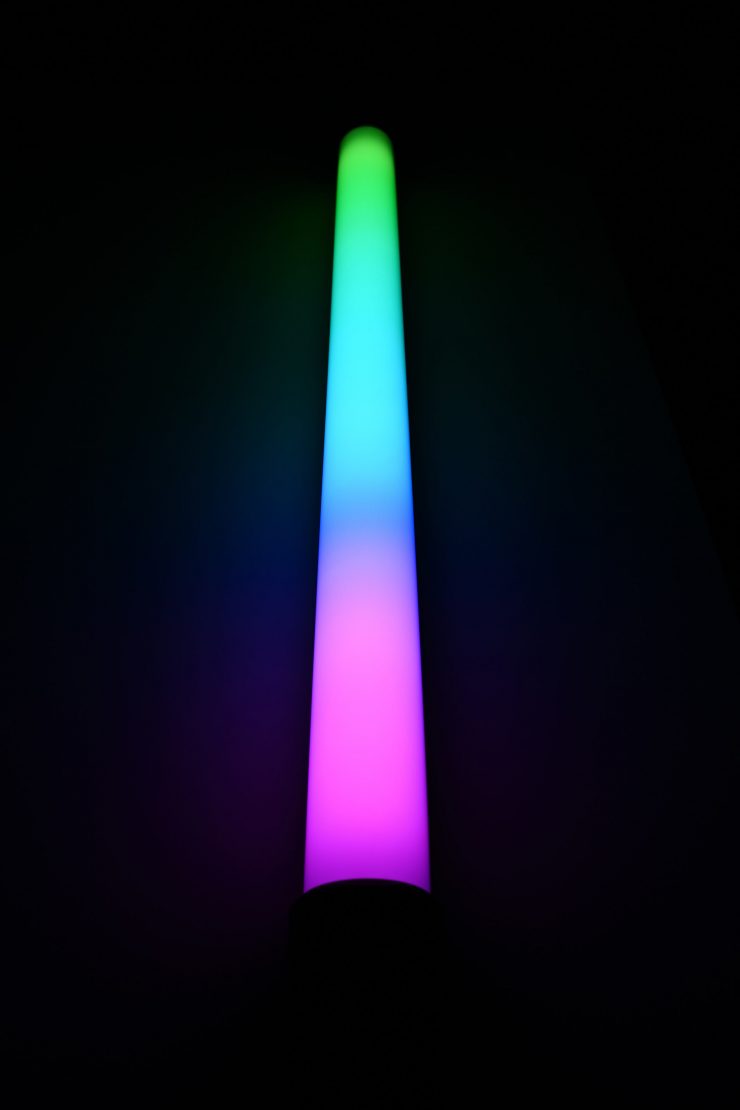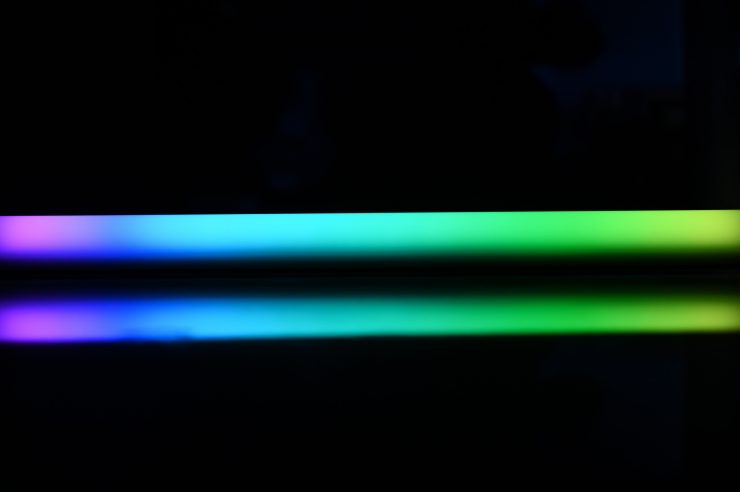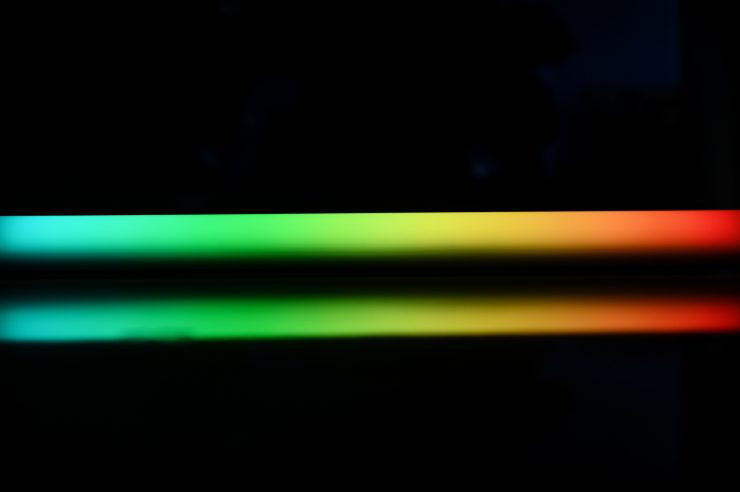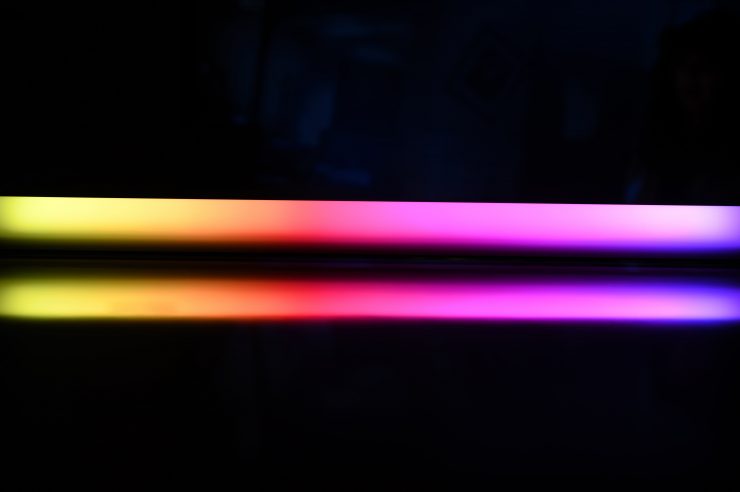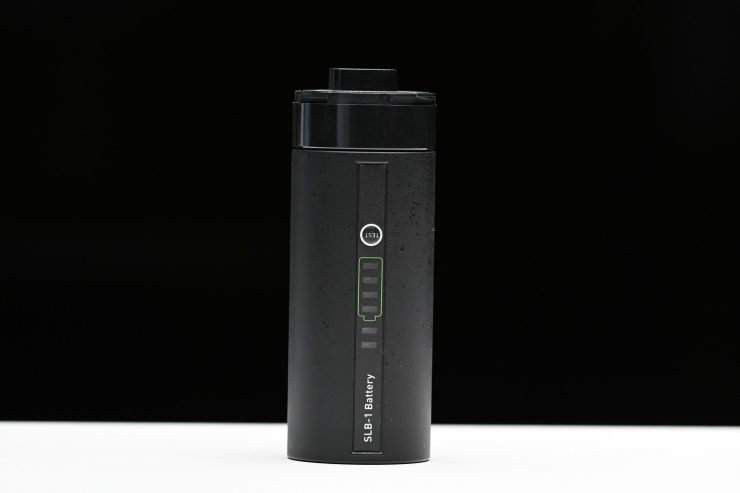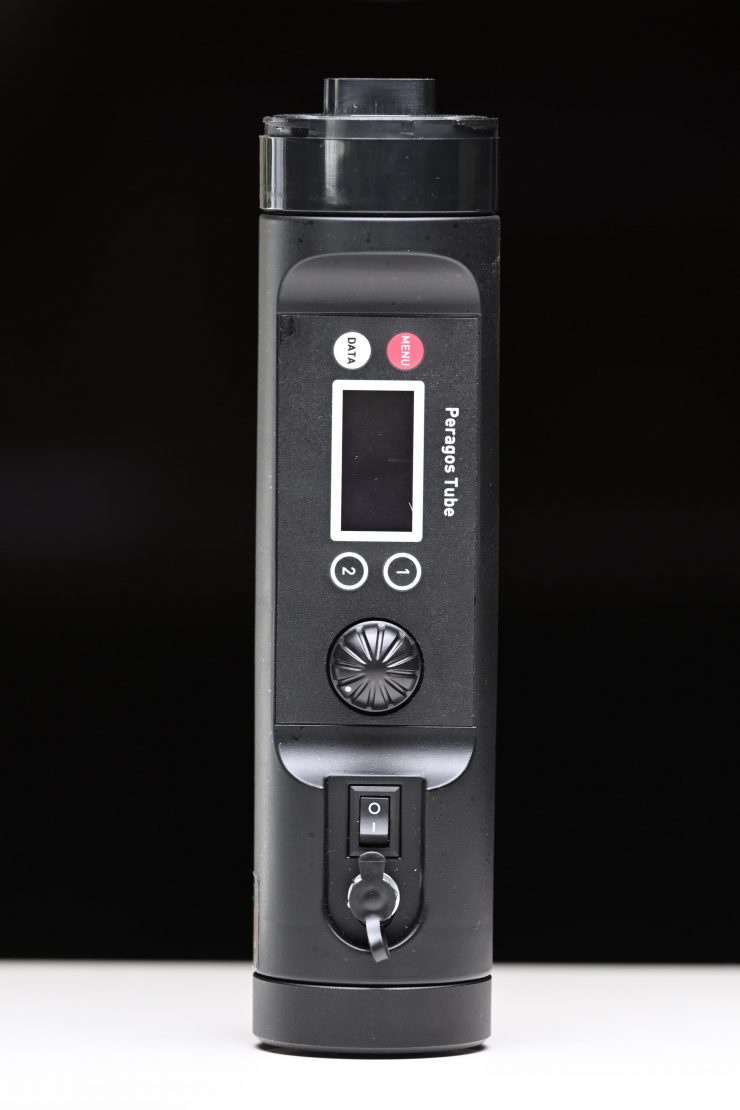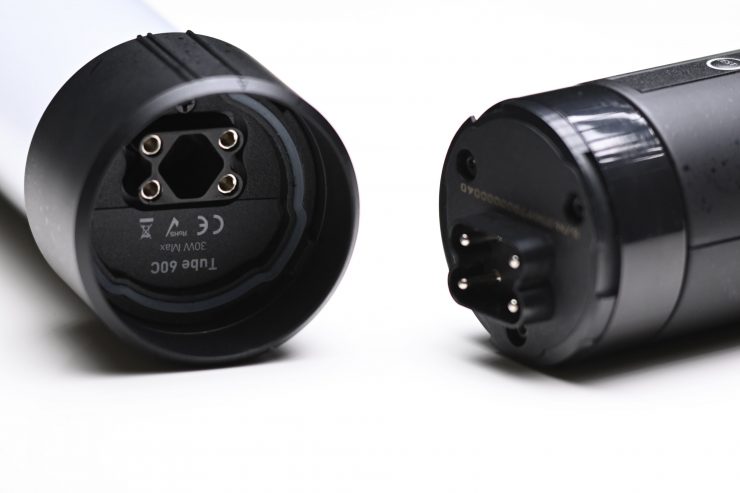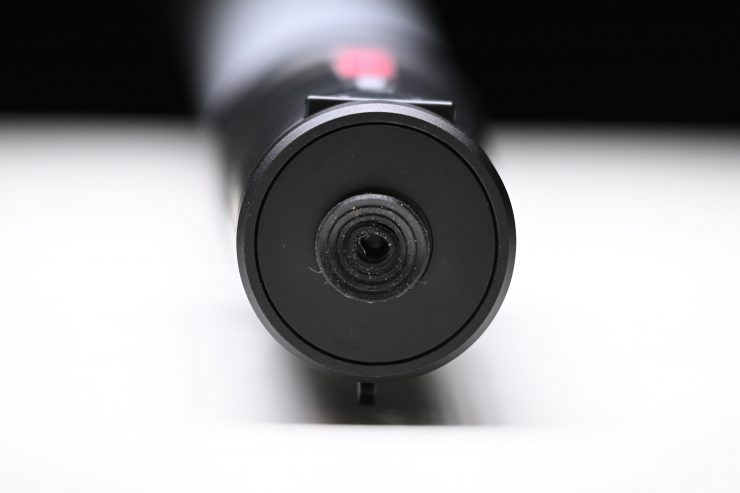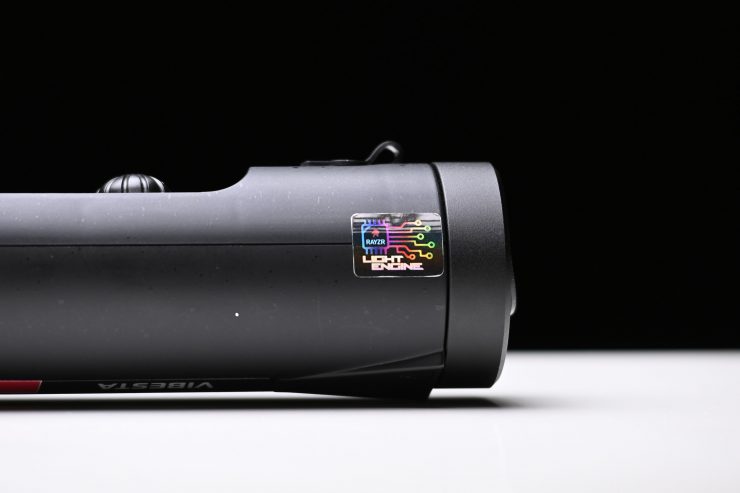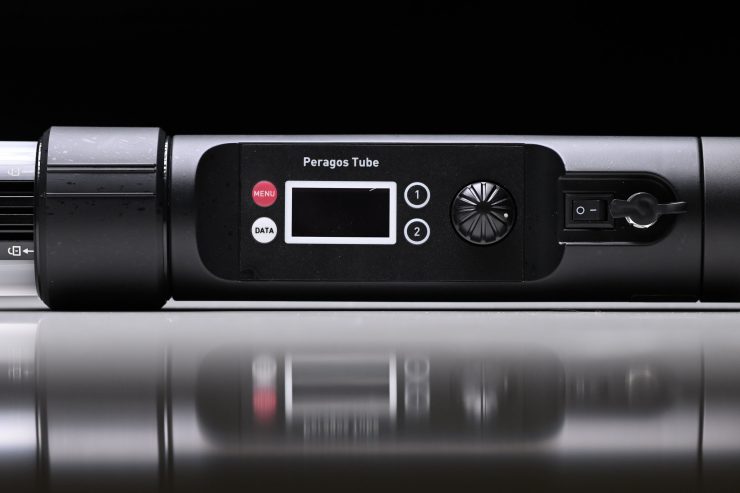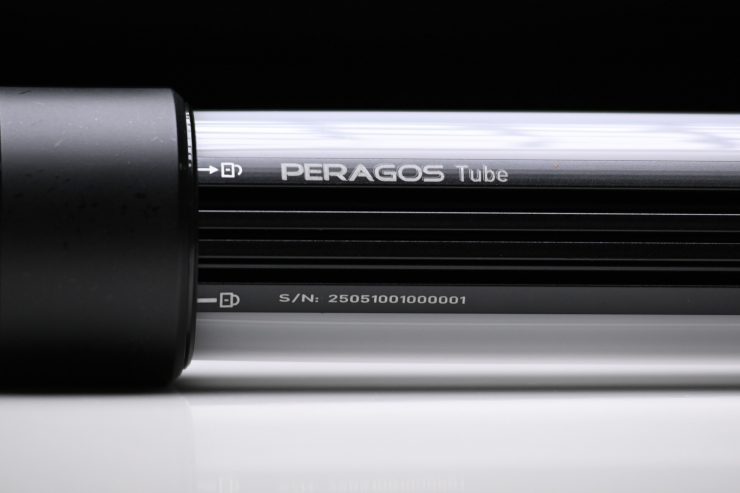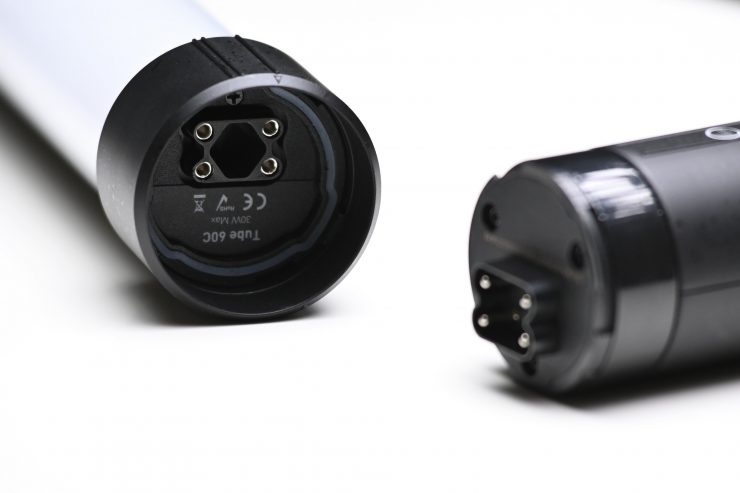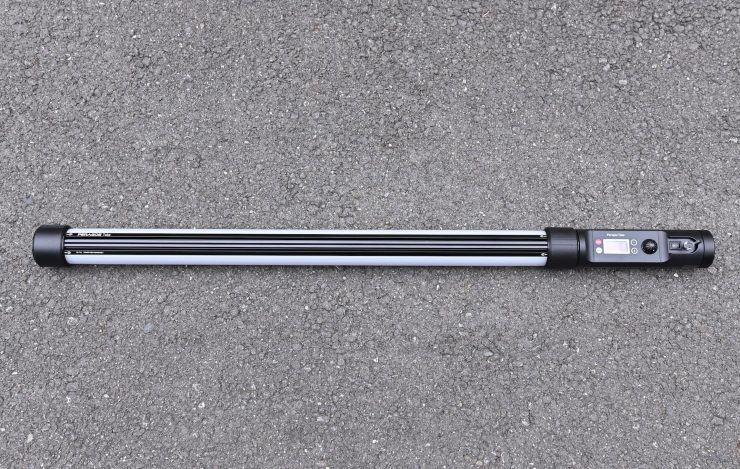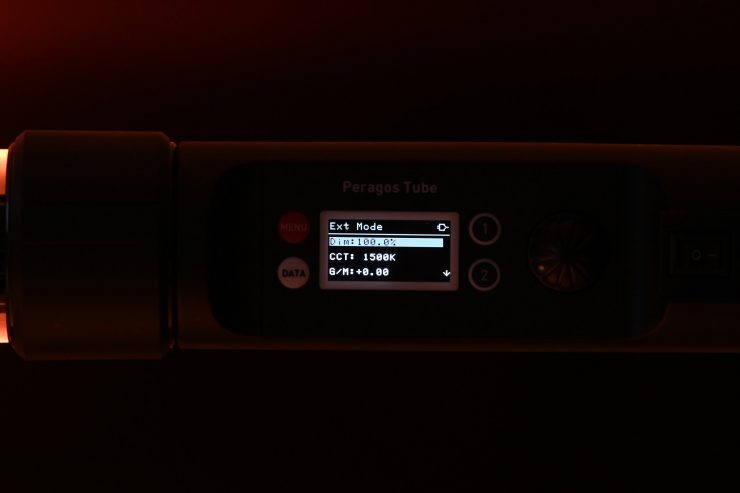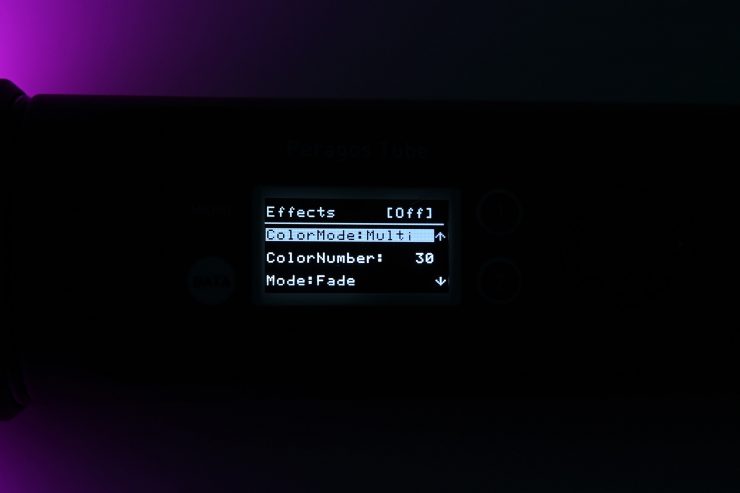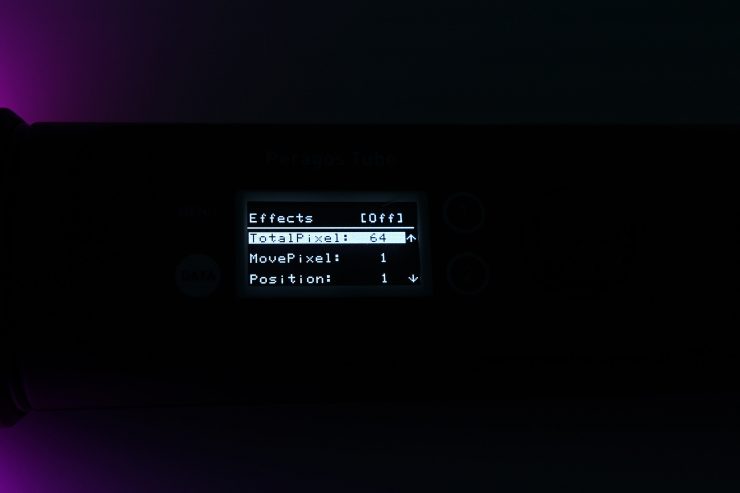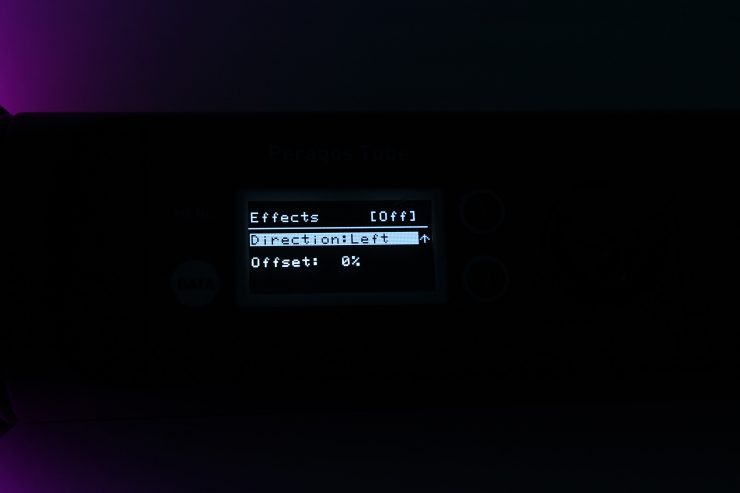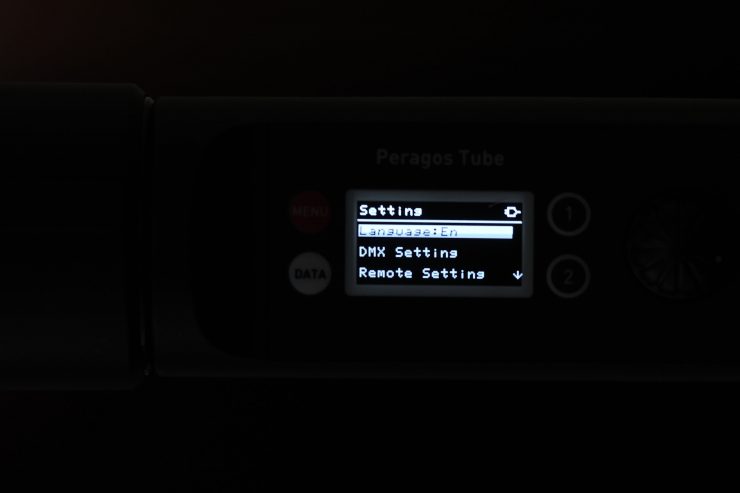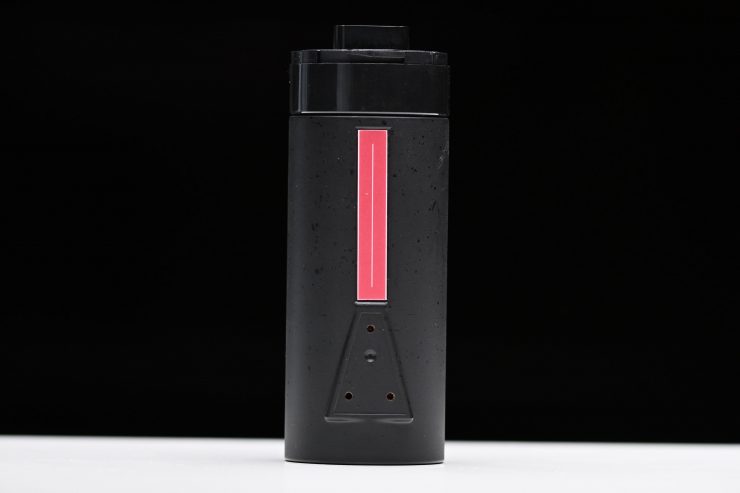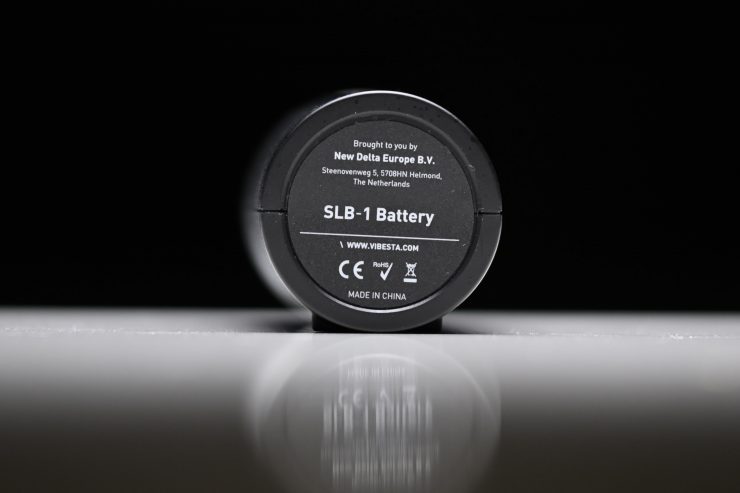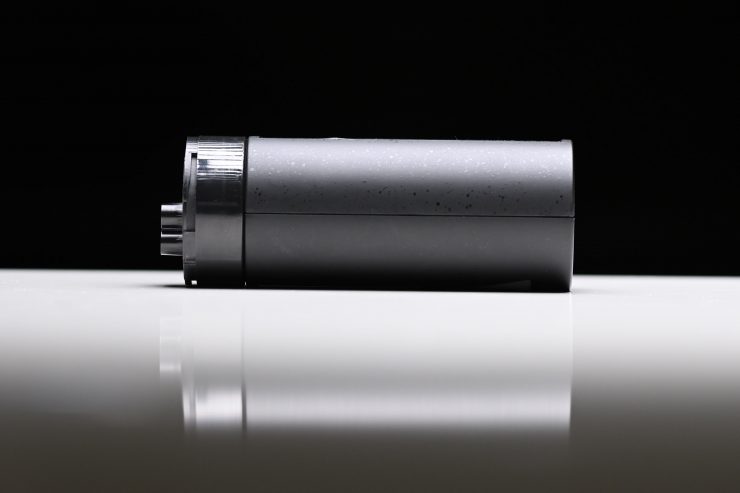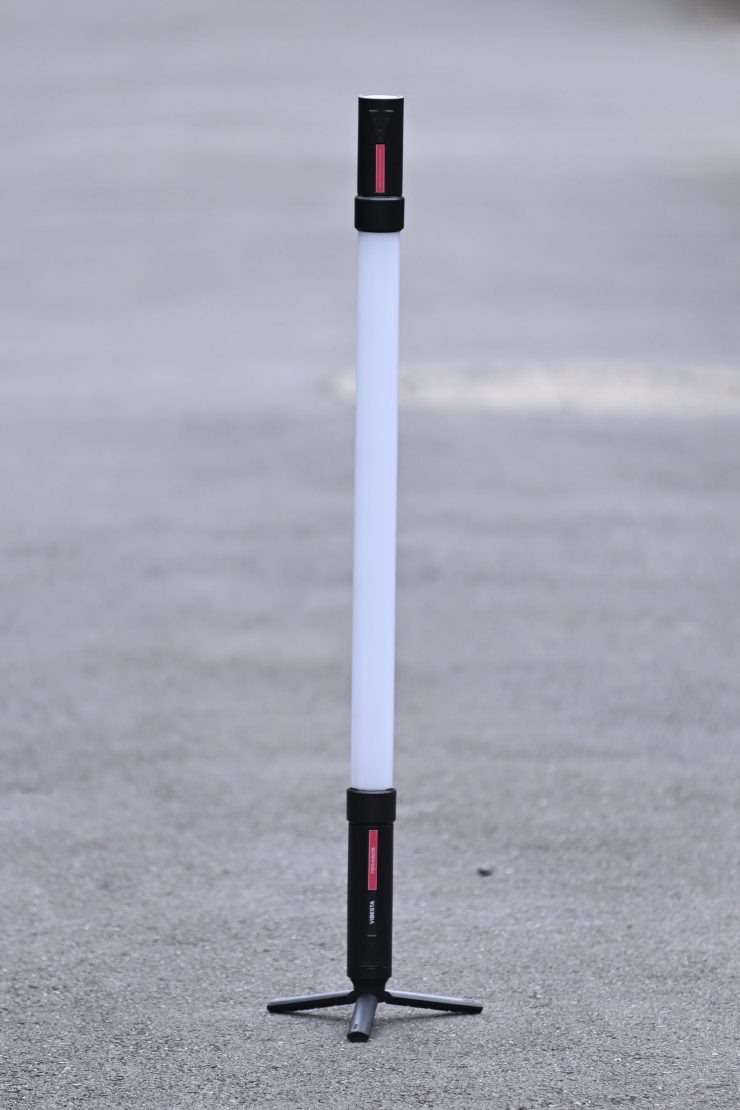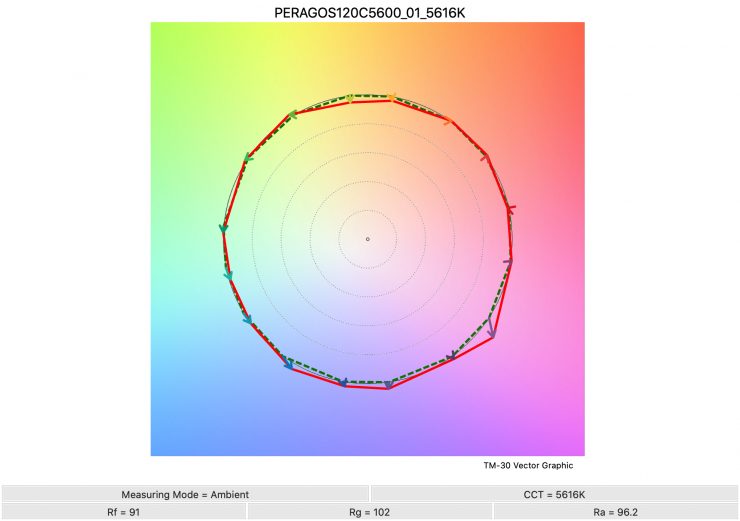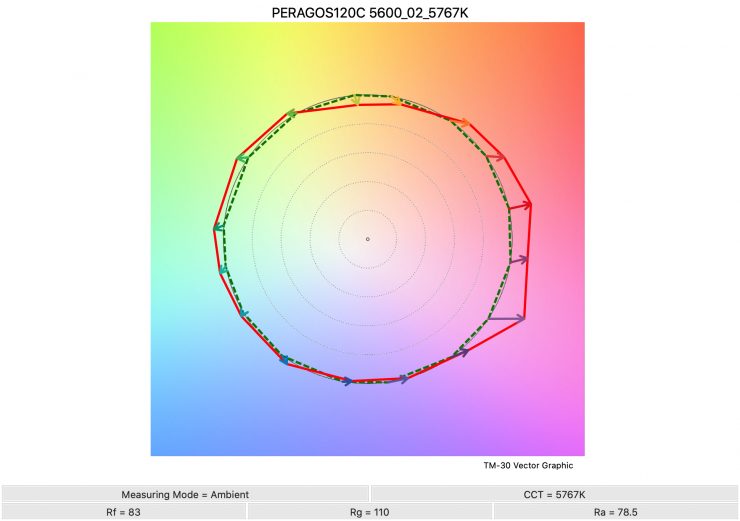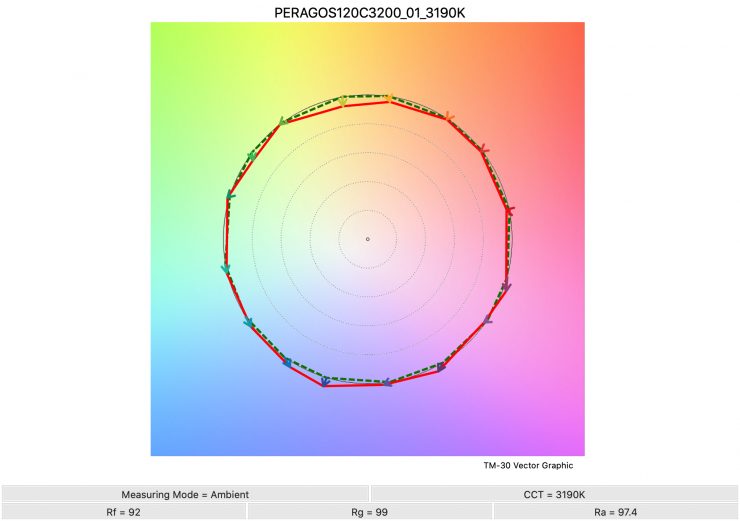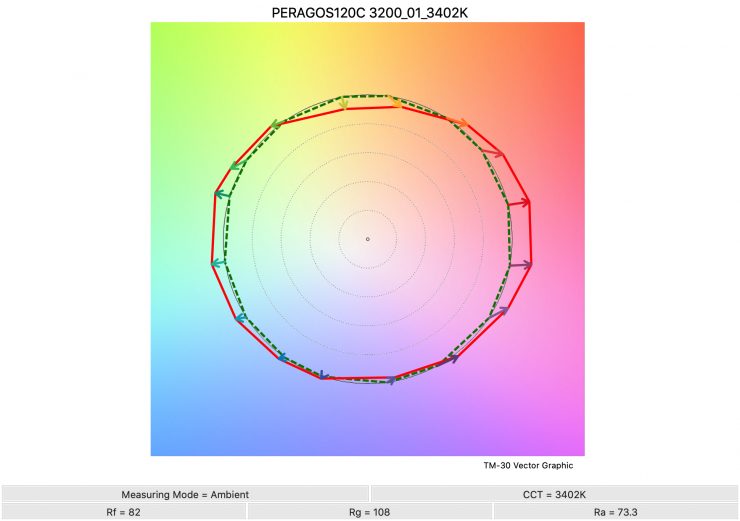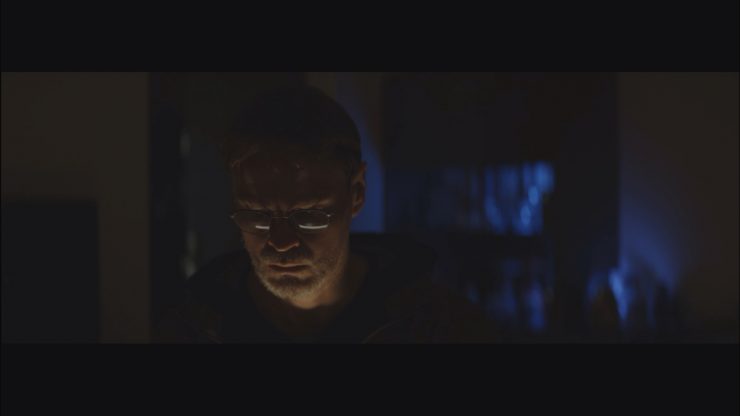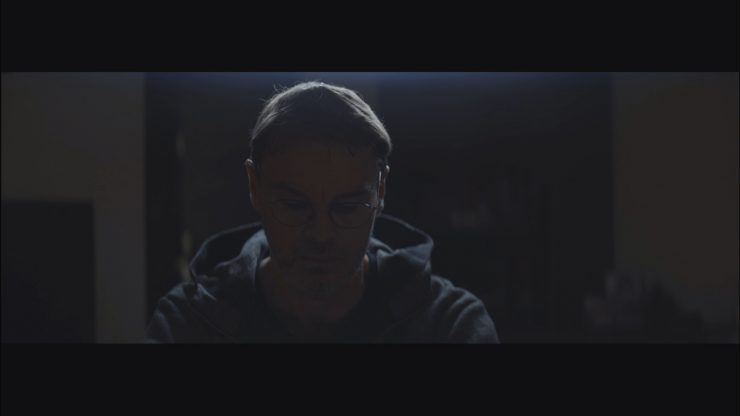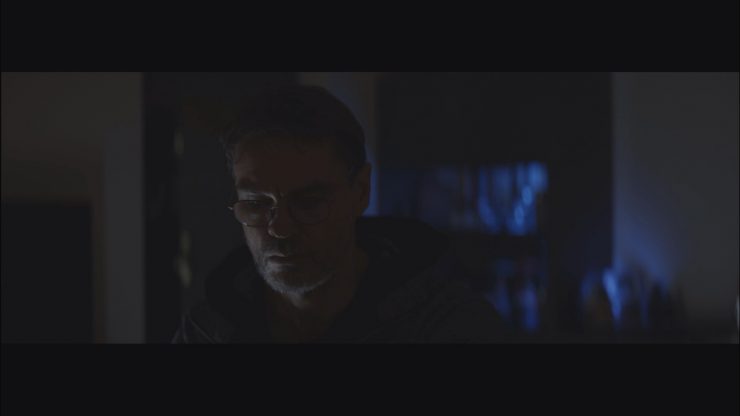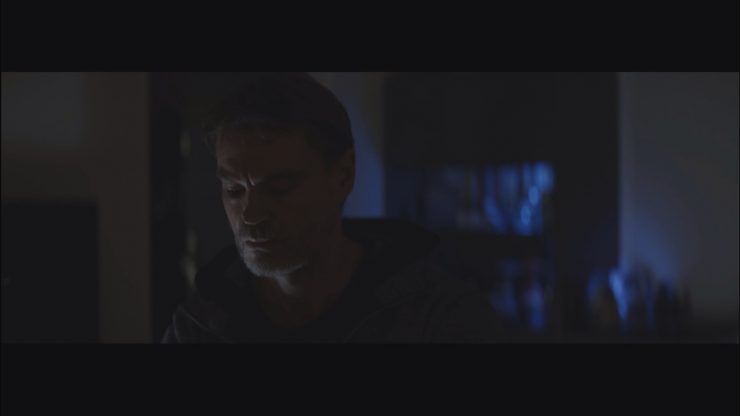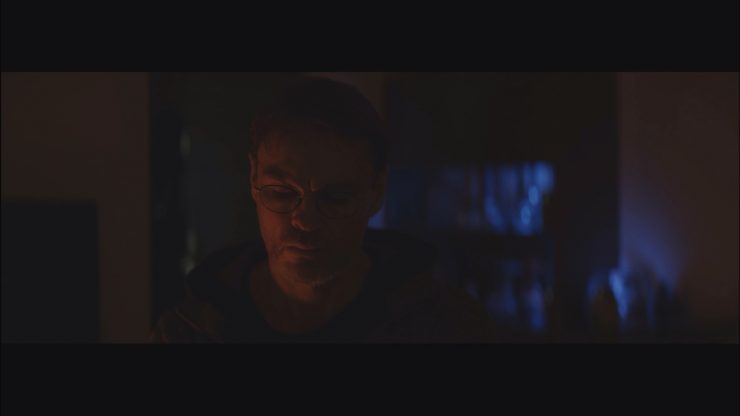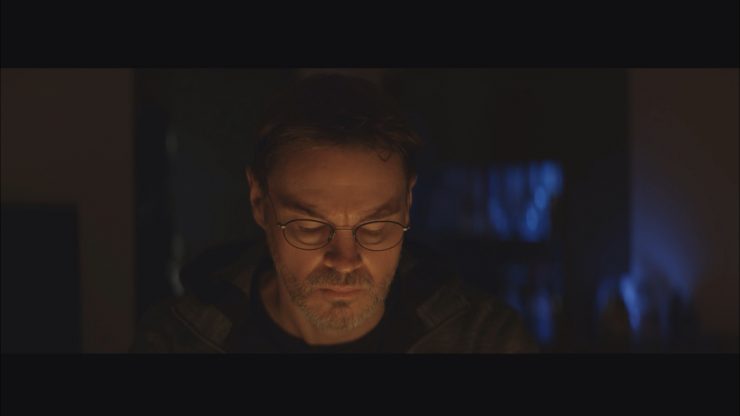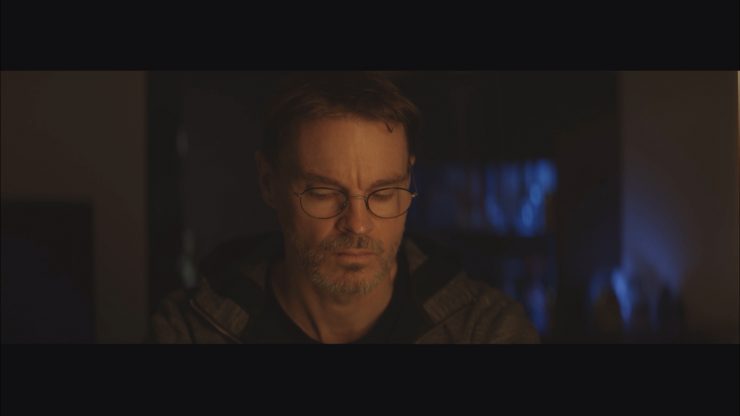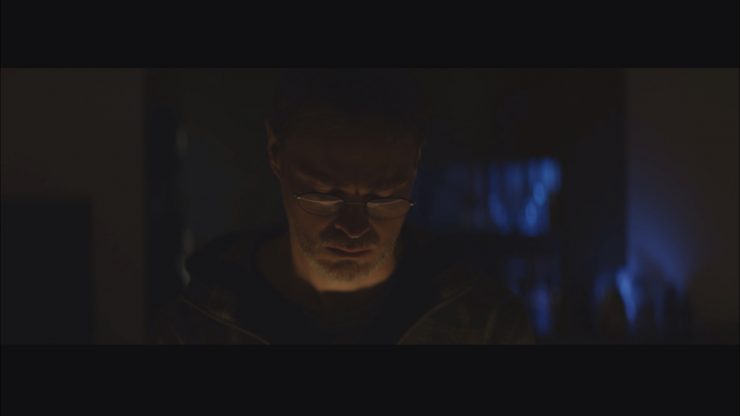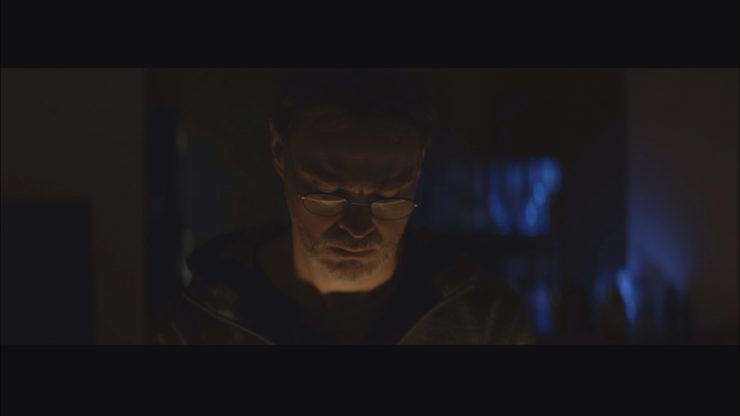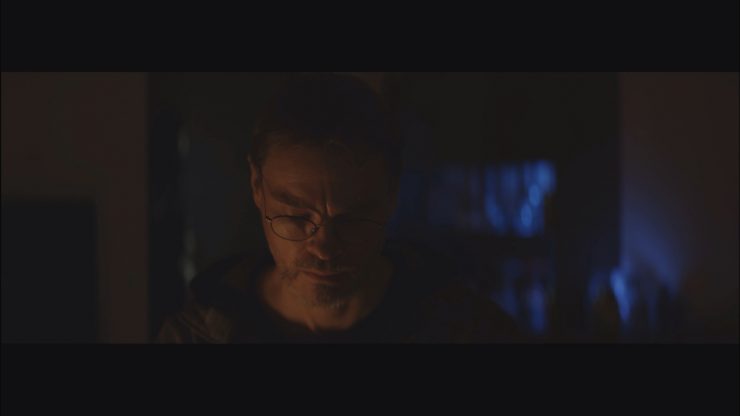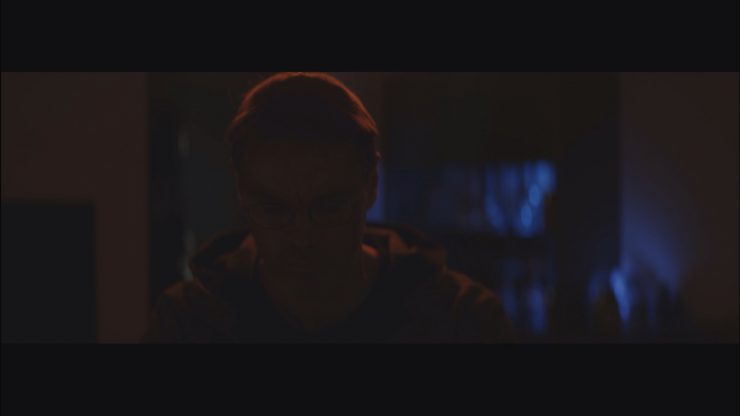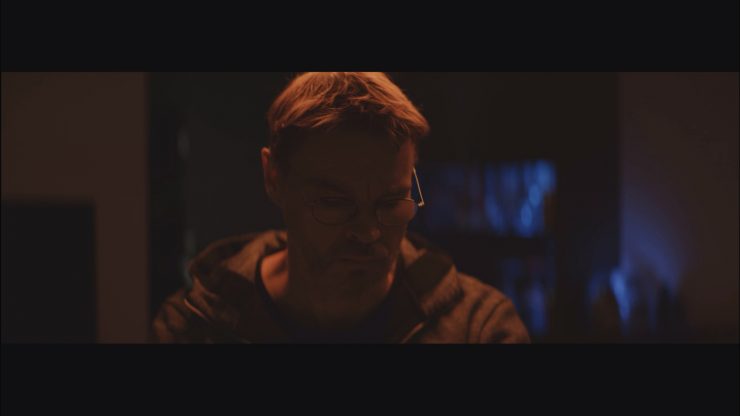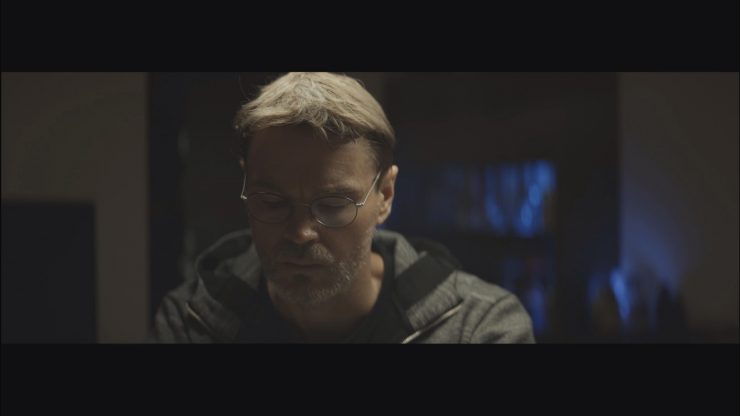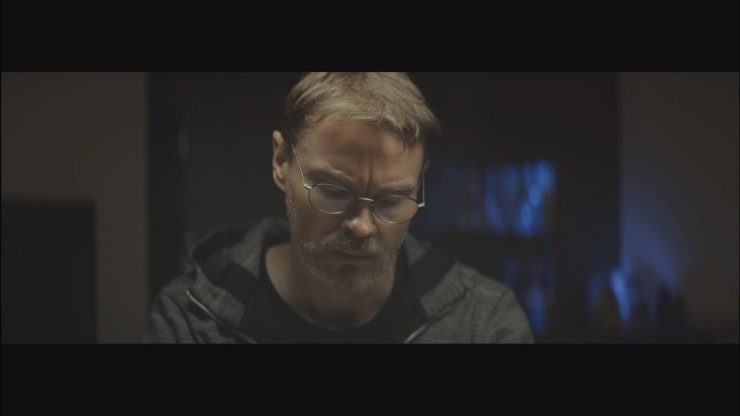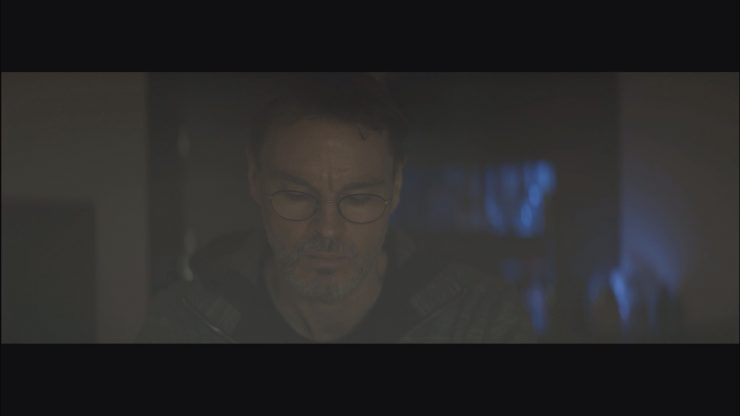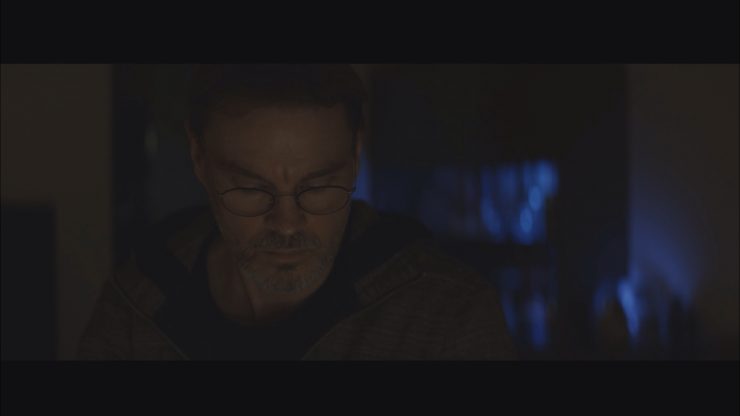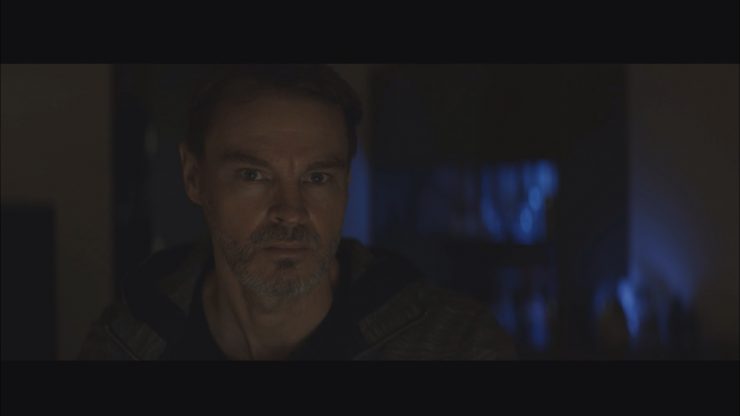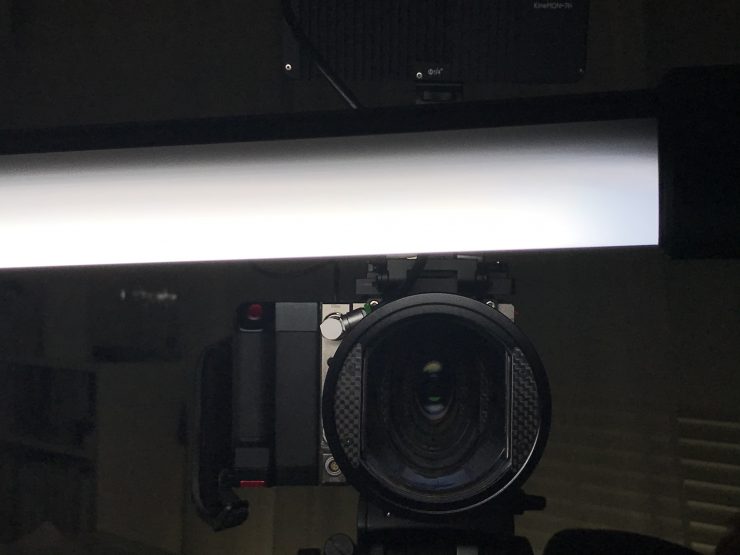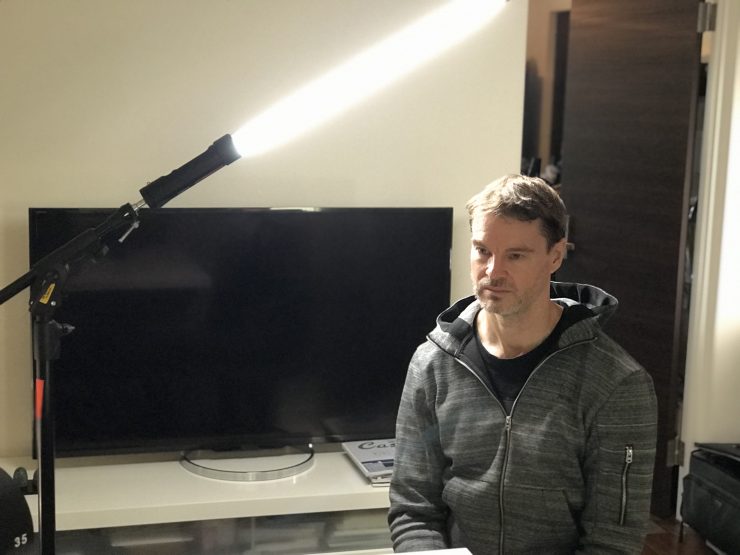
The Vibesta Peragos 120C Pixel is part of a new range of weatherproof LED tubes, that come in regular RGB versions, as well as Pixel Animatble versions that give you independent control of up to 32 pixels within one tube.

The lights have a wide color control and a form factor that makes them useful for discreet lighting effects and placement in confined or hard-to-reach places. They are also versatile enough that you could use them for interviews or any other normal lighting application.
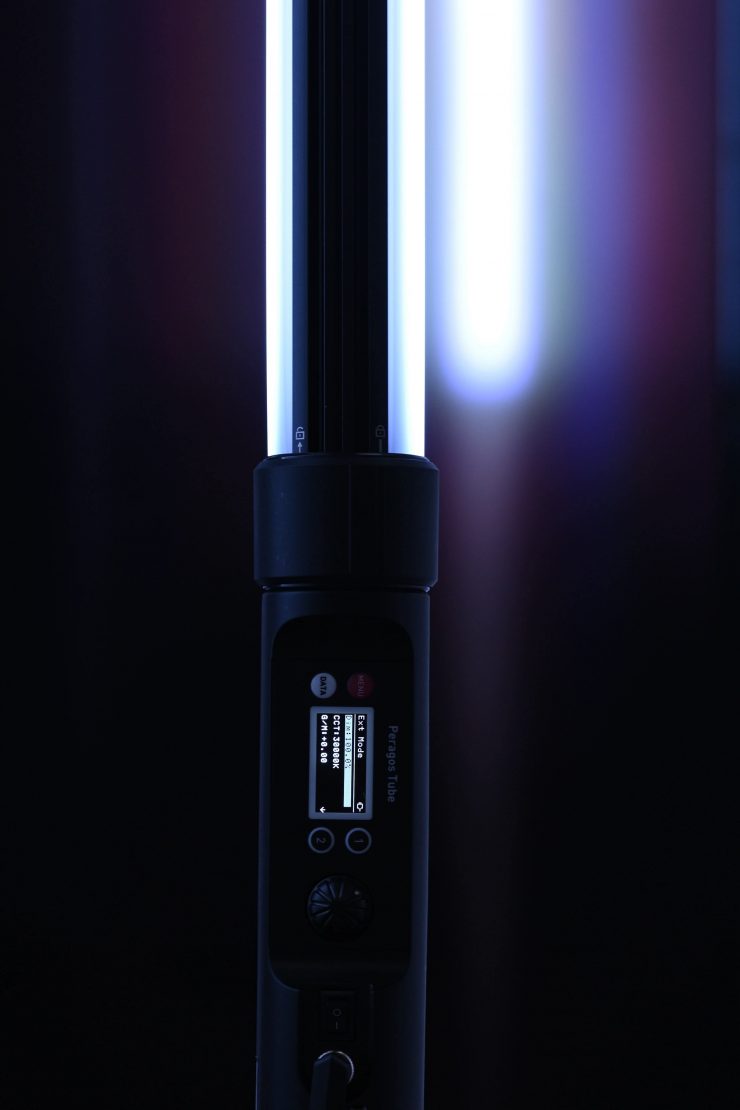
For this review, I am going to be looking at the Peragos 120C Pixel. Please bear in mind that this is a review of a second-generation prototype version of the light and I did encounter some issues that won’t be there in the final production versions.
The lights were launched as part of a Kickstarter campaign. Some of them are about to start shipping.
The tubes have a color temperature range of 2800K to 13000K in normal mode and 1500K to 30000K in an extended mode.
There are five different models to choose from:
- Peragos Wand 40C
- Peragos 60C
- Peragos 120C
- Peragos 60C Pixel
- Peragos 120C Pixel
The Peragos Wand 40C, Peragos 60C and the Peragos 120C don’t feature the pixel level control like the 60C Pixel and 120C Pixel.
The tube light is dimmable and while you can adjust color and light intensity locally on the fixture, you can also do it remotely from a console via onboard DMX or wirelessly with 2.4 GHz WiFi.
So now that you have some background on the lights, let’s have a look at the Peragos 120C Pixel.
Design & Concept
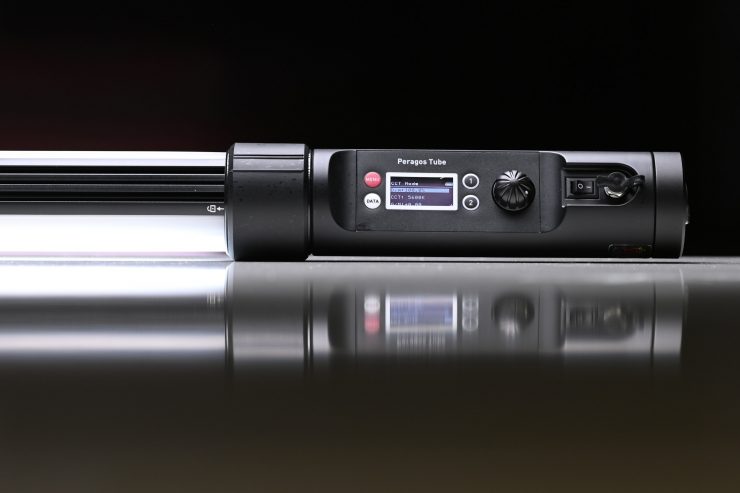
Tube lights are not a new concept. Fluorescent tubes have been around for a very long time, and in recent years we have seen quite a lot of RGB options coming to market. Tube lights can be a nice addition to any lighting kit and traditionally they have been able to produce a nice quality of light.
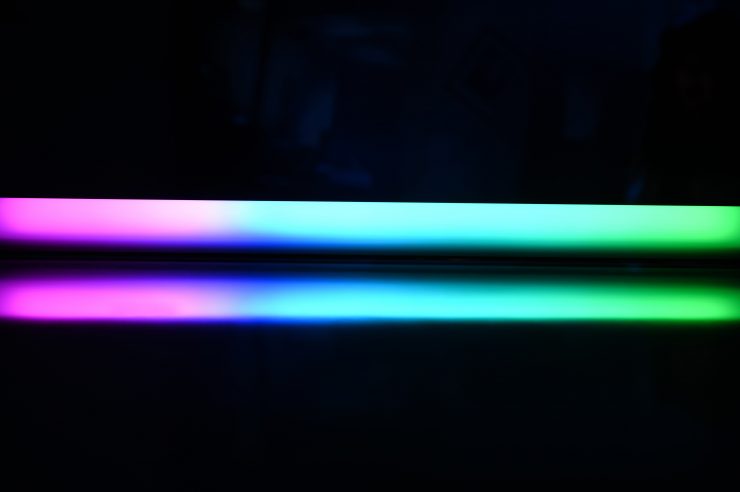
Vibesta’s goal when designing the 120C Pixel was to do something unique and to give the light a lot of features and functionality at an affordable price.
The Peragos 120C Pixel was also designed to be an all-in-one unit, where you can run it off the included battery or via mains power.
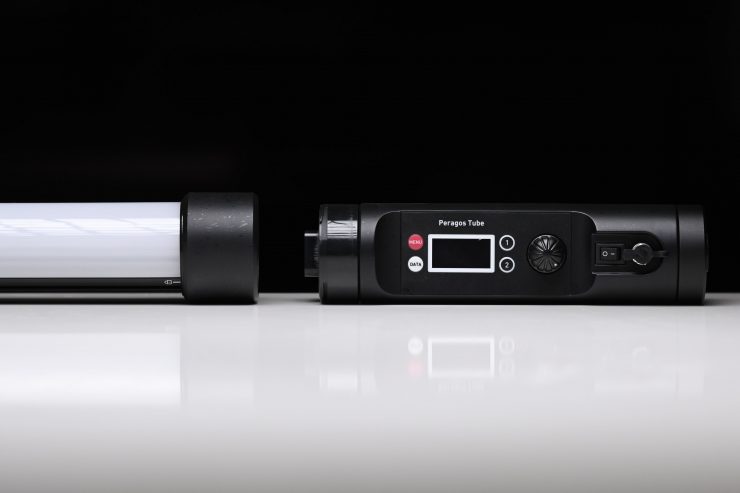
The nice thing about the Peragos 120C Pixel is that it can be broken down into components. The controller separates from the main tube, as does the battery. This makes it a lot more compact to transport.
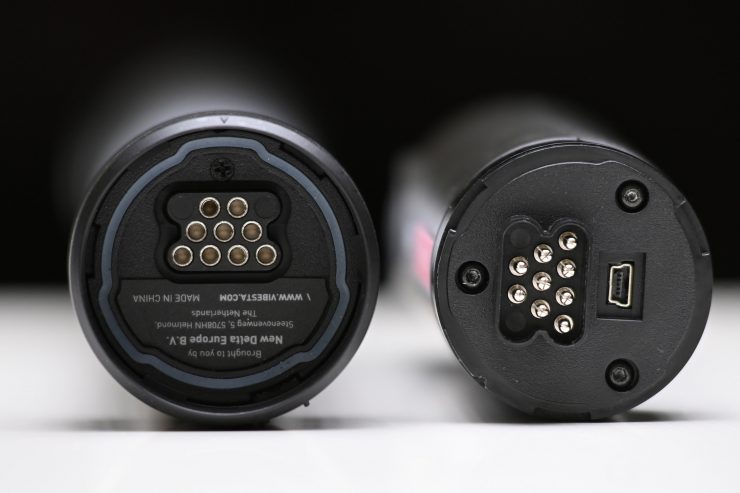
Both the battery and the controller attach to the main tube using a series of pins.
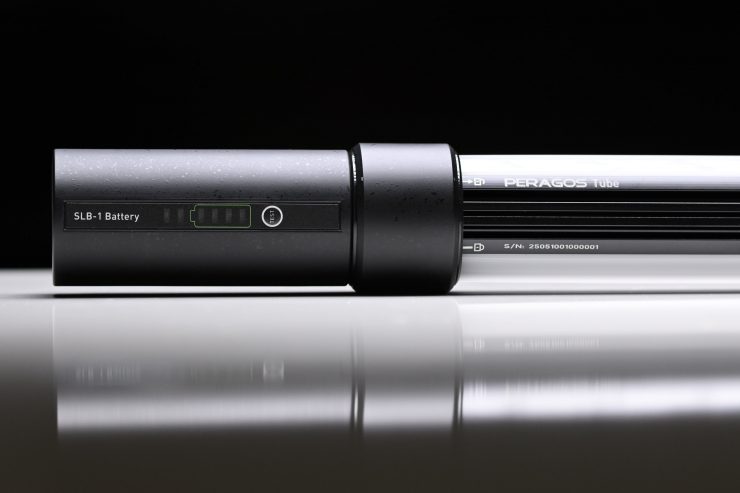
To me personally, being able to un a tube light off a battery is a big deal. Often I like to use lights such as these as replacements for practicals and actually have them visible in a shot. Not having to run power cables and then try and work out how to hide them is a big deal.
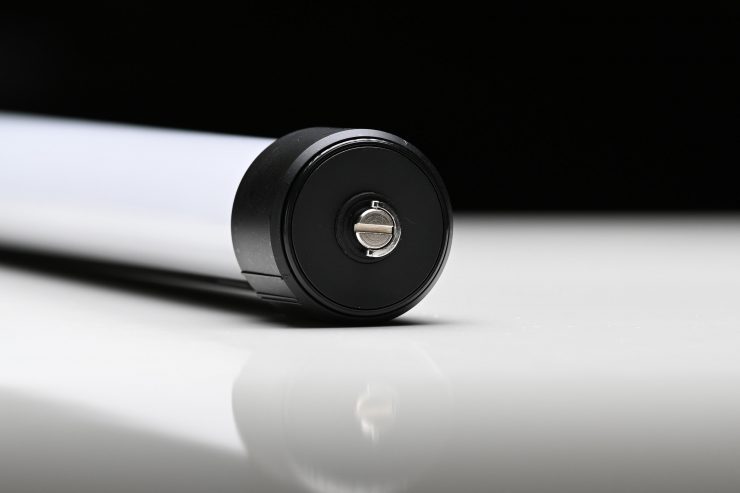
The all-in-one design makes it relatively quick to set up and use. The inherent problem with tube lights is you have to attach them to something unless you are simply laying the light flat on the ground. The Peragos 120C Pixel has two 1/4 20″ mounting holes at each end of the tube.
This is both good and bad. It is good because you can just mount it to something quickly, but it is bad because if you want to mount the light vertically all the weight is getting transferred to that 1/4 20″ mount. Luckily, Vibesta does have a range of optional mounting solutions available.
The other problem with long tube lights is when it comes to transportation and storage. Due to their length, they can be an awkward item to transport. Luckily the longest Peragos tube is only 120cm (4′) in length so that does make it slightly easier to transport than some longer tube lights.
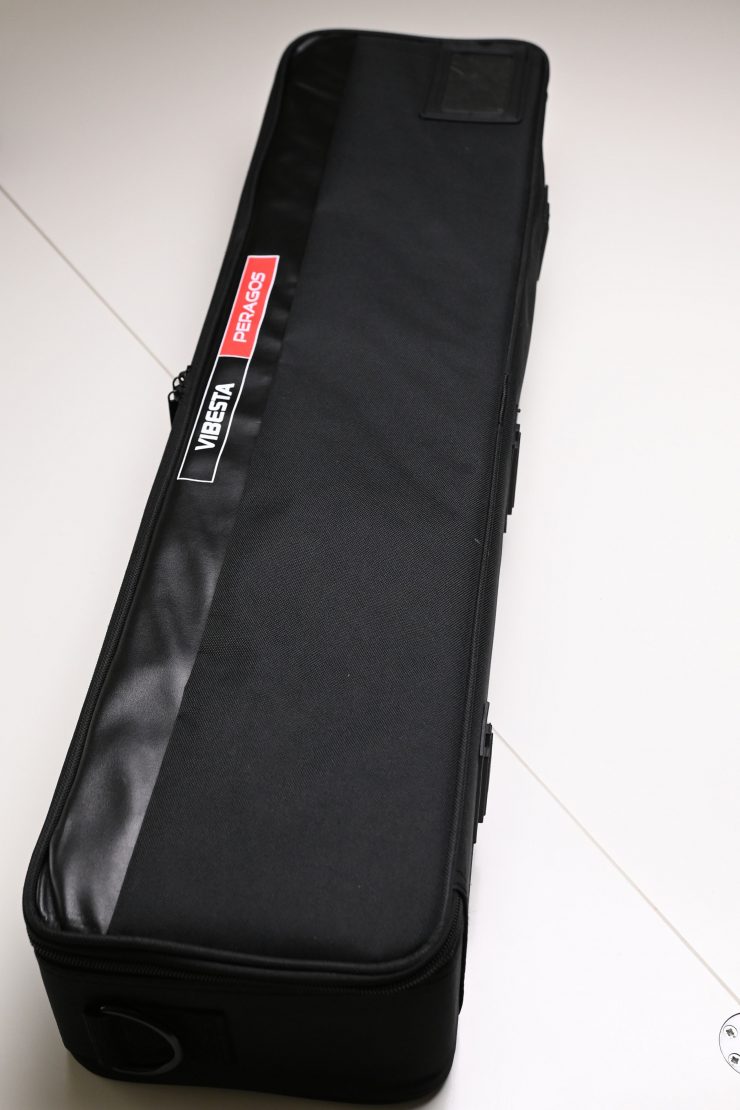
The light comes in a soft/hard bag, which is probably robust enough to transport on a plane if need be. It is nice that you get a bag like this instead of a completely soft bag that you can’t use for anything other than storage.
It is worth noting that the Vibesta Peragos tubes are T14 sized tubes, while tubes from Astera, Digital Sputnik, and Qusar Science are T12 sized tubes.
Animatable Pixels
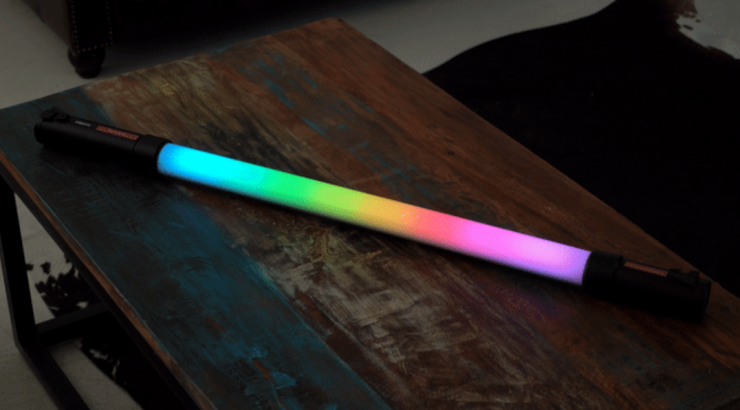
As I mentioned at the start of the review, you can independently control up to 32 pixels within one tube. However, if you want to, you can spread pixel animations across multiple tubes to create more complex setups.
Being able to independently control up to 32 pixels is something we haven’t seen before and it allows you to create some very interesting lighting effects.
Build Quality
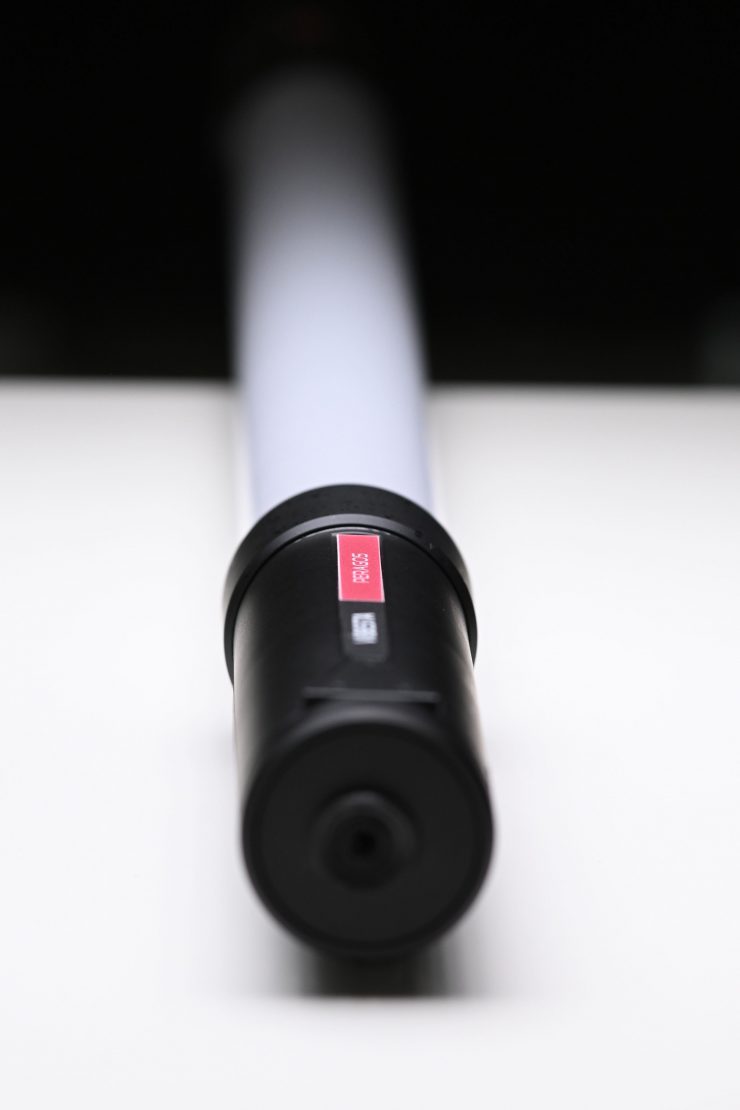
The build quality is pretty good, and the main tube utilizes a lot of aluminum to help dissipate heat. The controller does feature a lot of plastic parts to keep the weight down. The in-built LCD display is ok but it can be hard to see as it is quite small.
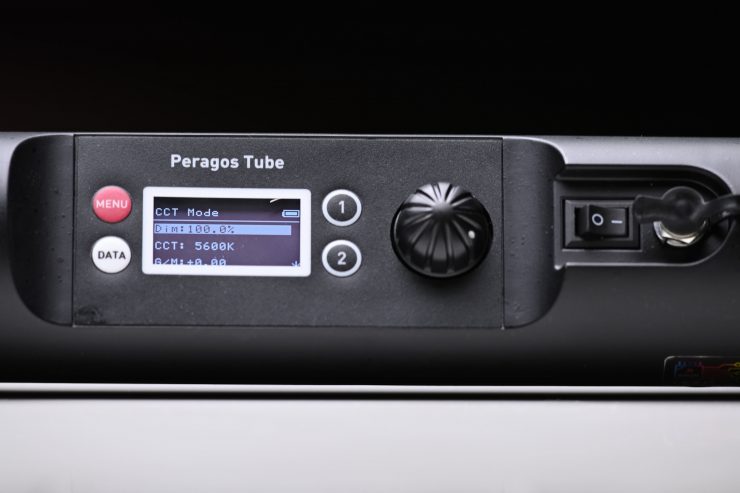
The Dials and buttons do seem a little better than those of the Ledgo AltaTube lights that I reviewed earlier in the year.
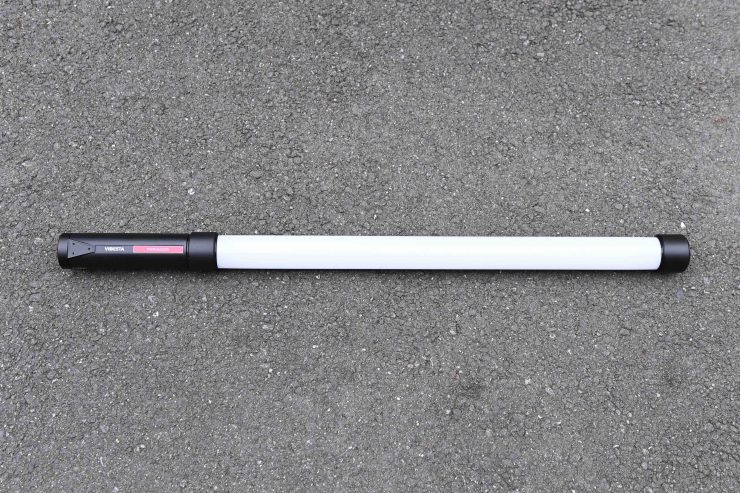
It is hard to judge just how robust these lights are and how they would hold up to extensive use. I wish I could be more specific than that, but I’m in no position to comment on longevity after only spending a few weeks with the lights.
Weatherproof


The Peragos tubes are IP 66 rated, so you can use them in a variety of weather conditions. An IP66 rating means that it is protected from total dust ingress and from high-pressure water jets from any direction.
Weight
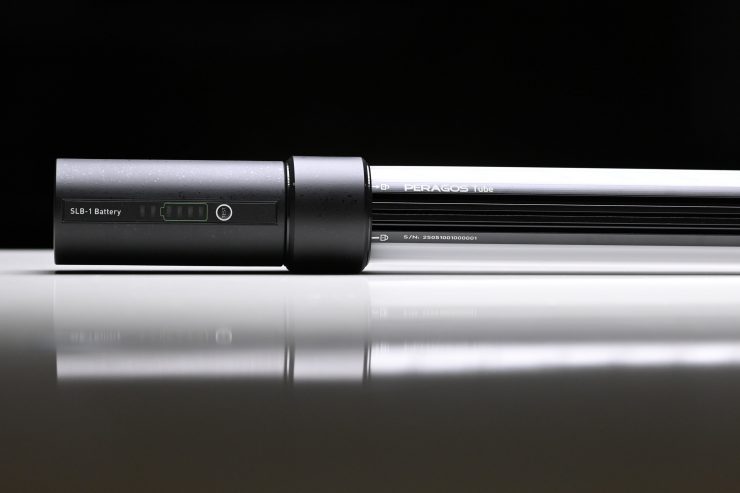
The Vibesta Peragos 120C Pixel weighs in at 1.2kg (2.64 lb) with the controller attached (excluding power supply). As a comparison, the Ledgo AltaTube 120C tips the scales at 1.99kg (excluding power supply).
Controls & Menu System
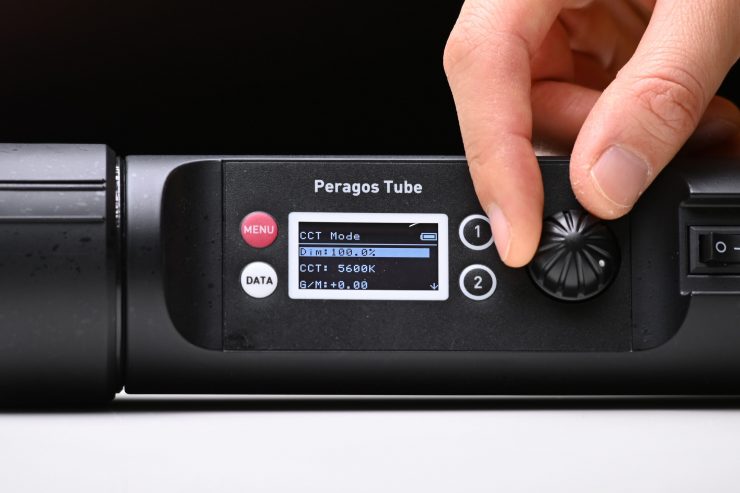
The controls and menu system are not overly complicated, but because of the lack of buttons, you will find yourself having to use the dial to make most changes. In saying that, once you get used to how it works it is very easy to make adjustments.
The dials for making changes to things such as Kelvin color temperature and intensity are easy to use. When you are adjusting the Kelvin color temperature you can only do it in increases or decreases of 100K. It would have been nice to be able to adjust the light more precisely.
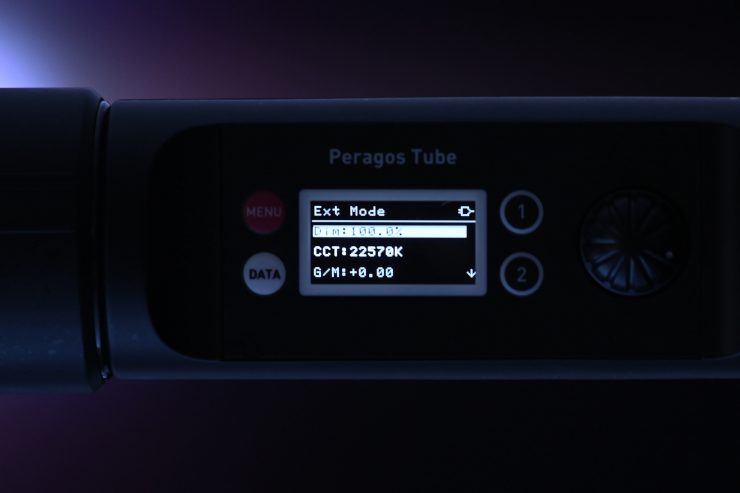
It is nice that the controls are on the backside of the light and not located on the front. With the Ledgo AltaTubes that I recently reviewed, the problem I found when making changes is that the display and controls face the same direction as the light, so you end up getting blinded when you are making adjustments.
Operating Modes
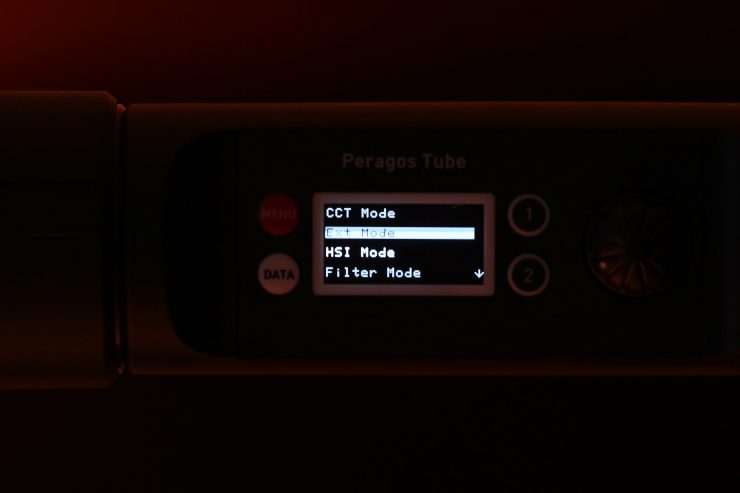
Depending on what operating mode you are in, the lights can be configured to work in a variety of ways:
- CCT Mode
- Extended CCT Mode
- HSI Mode
- RGBWT Mode
- x,y Coordinates
- Filter Mode
- Effects Mode
- Settings Mode
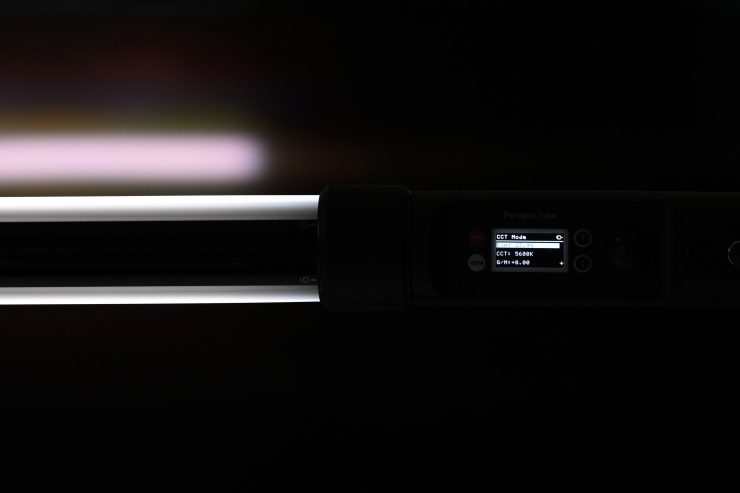
There is a CCT mode where you can adjust the Kelvin color temperature between 2800K to 13000K.
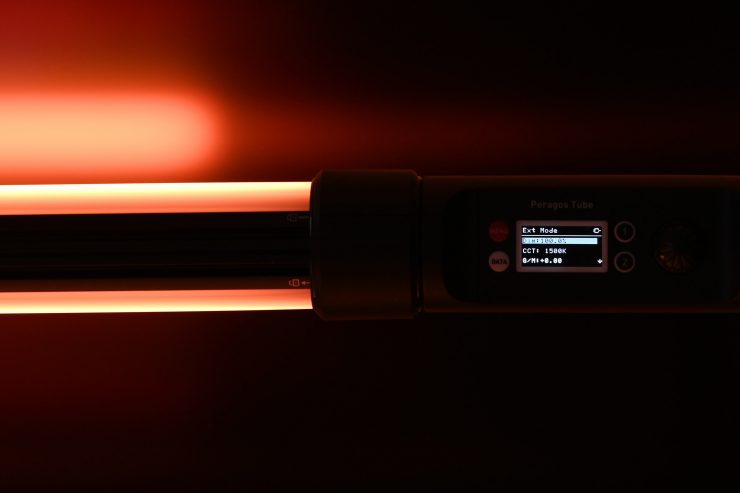
The Extended CCT Mode lets you adjust the light from 1500K up to a whopping 30000K.
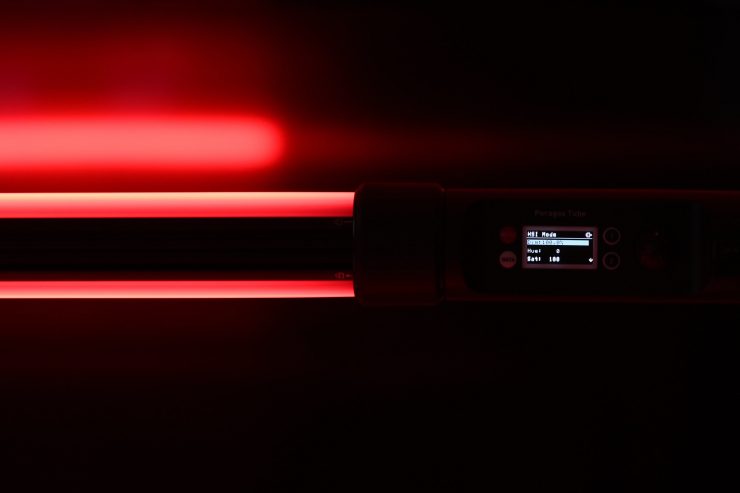
The HSI Mode lets you make changes to hue, saturation, and intensity.
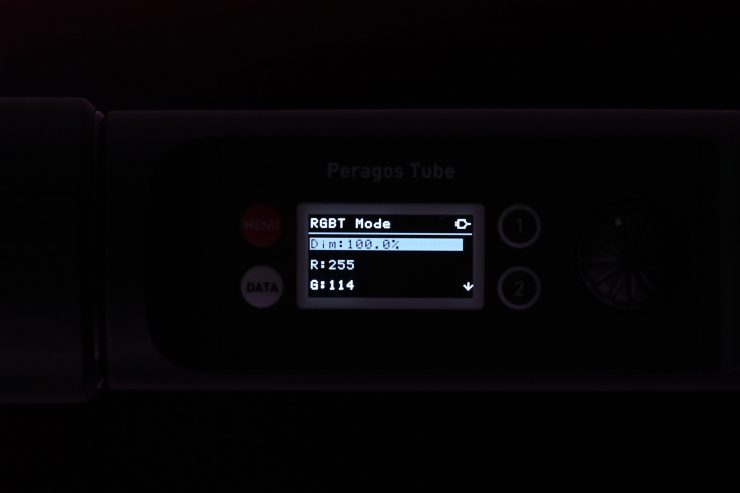
RGBWT Mode lets you adjust the hue, saturation, and intensity of the light. In this mode, you can create a multitude of different colors and looks.
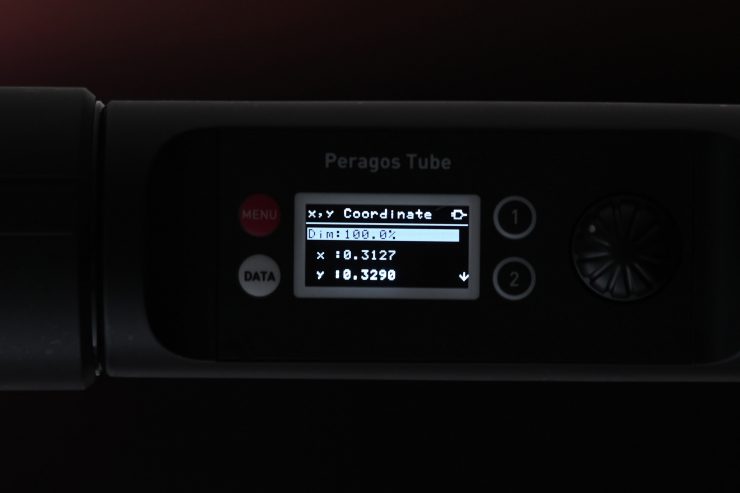
x,y coordinates Mode lets you enter the x/y coordinates you measure from another light so you can enter them into your fixture so you can get them to exactly match. This is referring to matching RGB colors from other lights. Entering x/y coordinates is just telling the light what color you are creating.
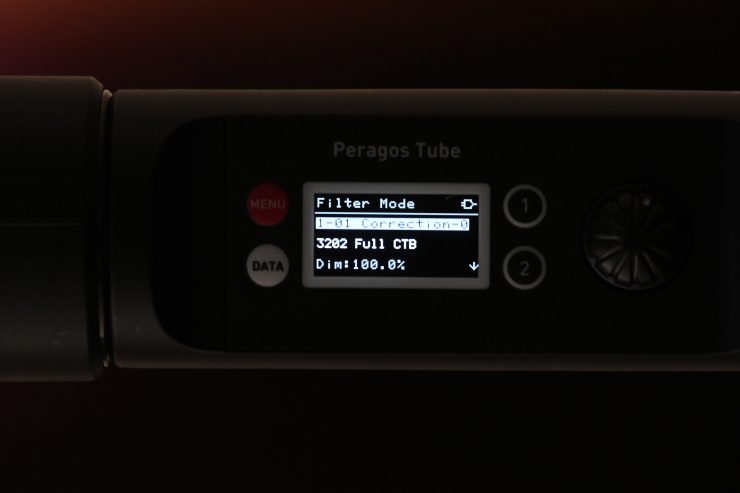
Filter Mode lets you recall various digital gel simulations. There is a good variety to choose from.
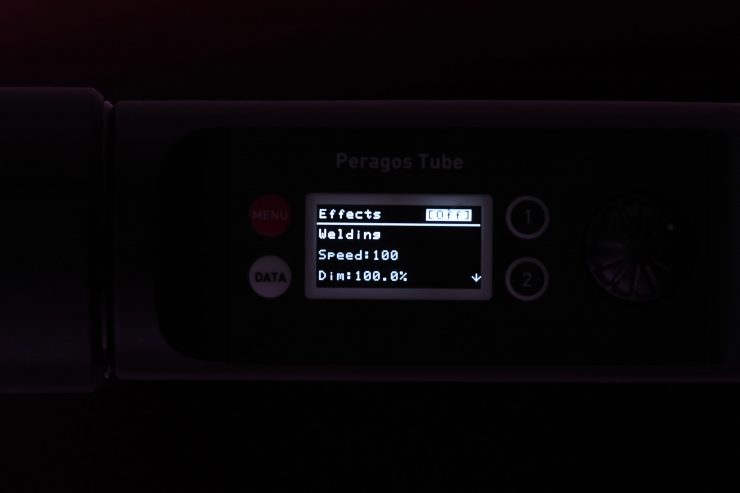
The Effects Mode as its name suggests, lets you create a range of effects such as:
- Party
- Cop Car
- Candle Light
- Club Light
- Monitor
- Multi-Flash
- Fireworks
- Light Strobe
- Fire
- Television
- Paparazzi
- Color Chase
- Welding
- Fluorescent
- Lightning
- Clouds
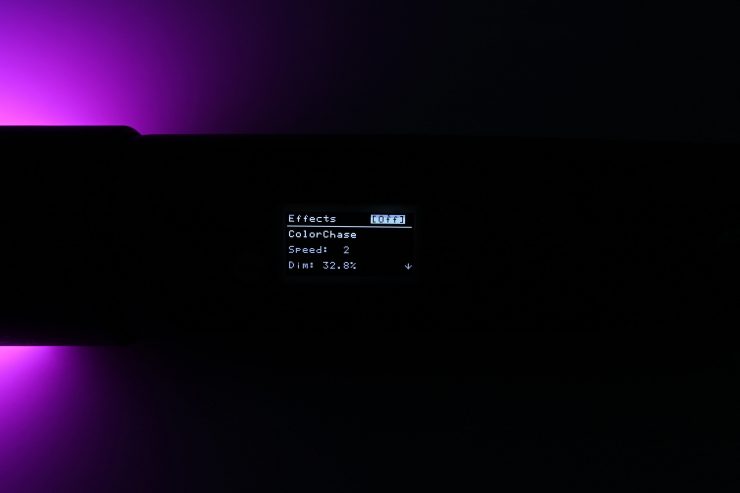
Color Chase is where you can individually control up to 32 pixels in the light.
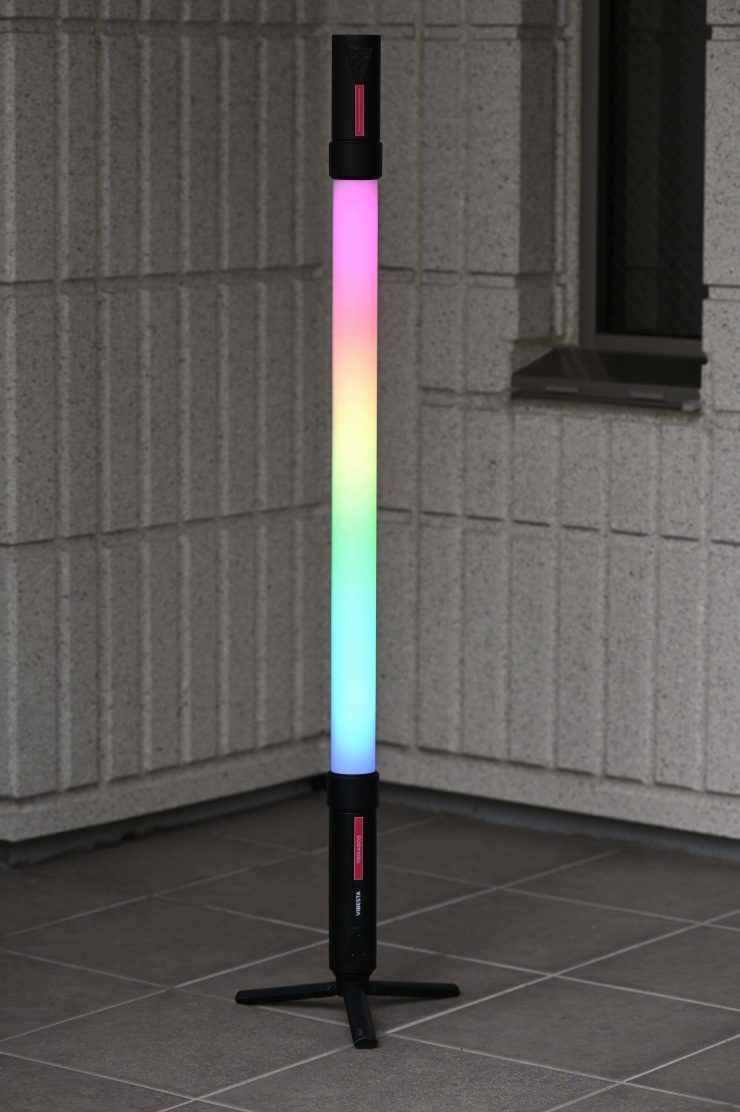
There is a range of adjustments that you can do:
- Speed
- Dimming
- Color Mode: Single/Multi
- Color Number
- Mode: Fade/Pulsing
- Total Pixels
- Move Pixel
- Position
- Direction: Left/Right
- Offset
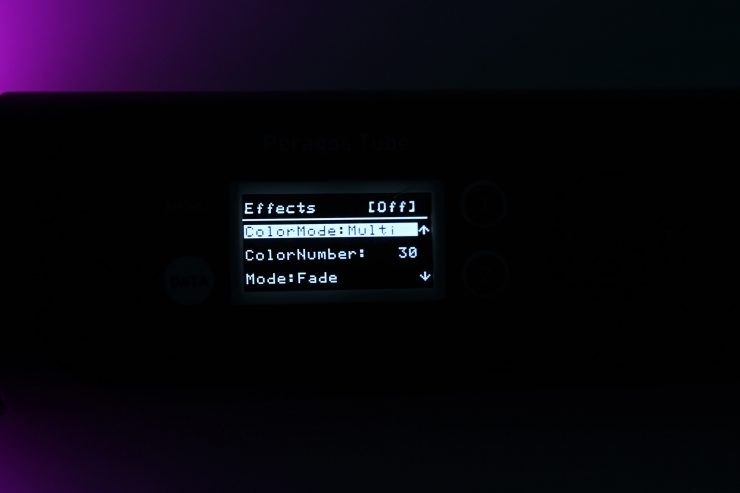
All these elements can be individually adjusted right on the controller itself.
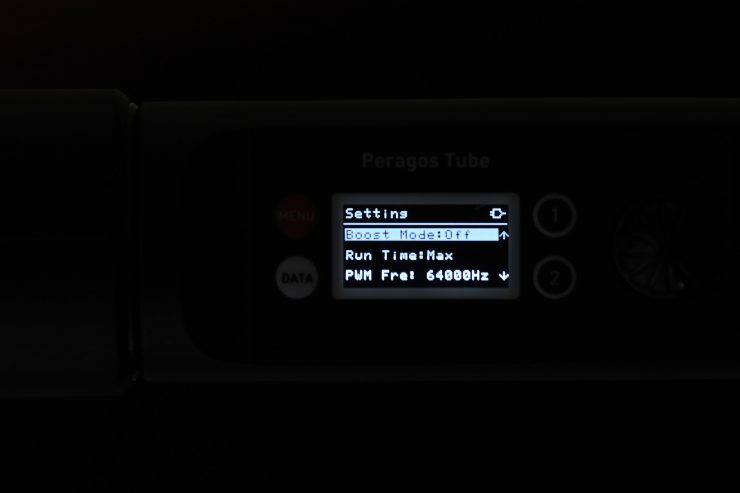
In the Settings Mode you can make various adjustments, such as turning the Boost Mode On/Off or adjusting the frequency.
The lights also give you the ability to change the +/ Green/Magenta tint. This is a handy feature to have.
Beam Angle
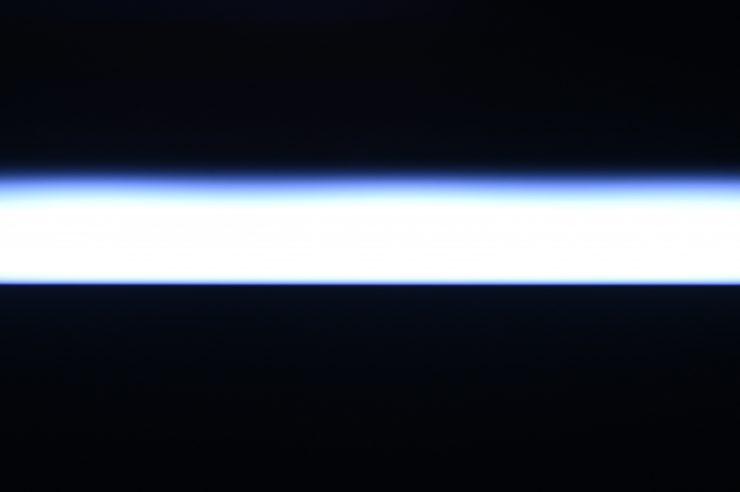
The Beam angle is listed as being 220°. This gives you a rather wide spread of light. Tube lights are quite unique in this regard as you can create a broad spread of light from a long source.
Power & Power Draw
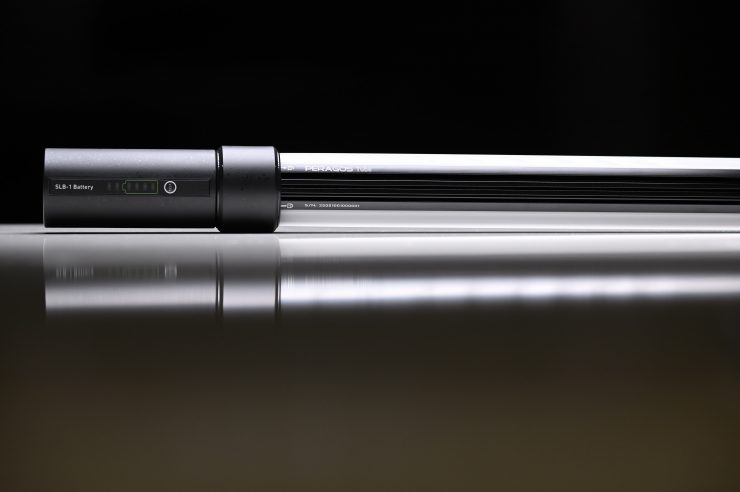
The Peragos 120C Pixel draws 60W or 80W if you have it in the Boost Mode. It can be powered via mains power or through a rechargeable battery.
This low power draw means the lights can easily be powered remotely without the need for mains power.
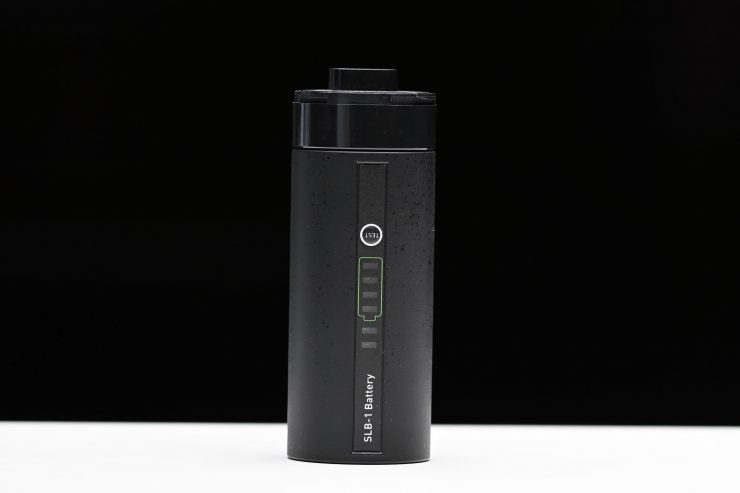
The tube uses an exchangeable Smart Li-Ion battery that is claimed to be able to power the fixture for up to 20 hours (not at full output). If you are running the light at 100% output you will get around an hour or so from my testing. When the AC adapter is connected to the controller and the Smart Li-Ion battery pack is attached it automatically charges during operation.
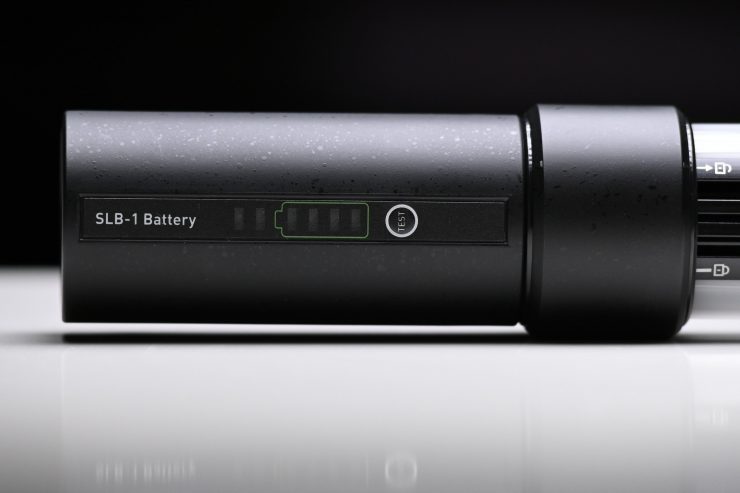
You do have to have the Smart Li-Ion battery attached to the light to charge it unless you use the optional 4 battery charger that is available.
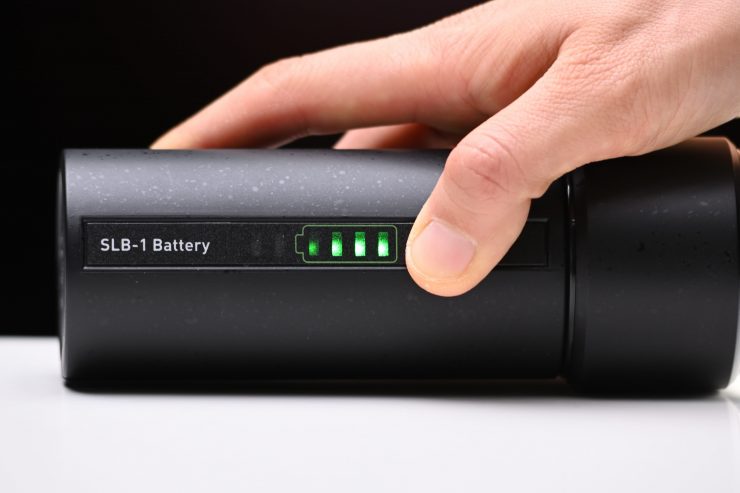
The battery has LED indicators so you can see how much power it has remaining.
The 4 battery charger allows you to recharge multiple units at once and even from within their case.
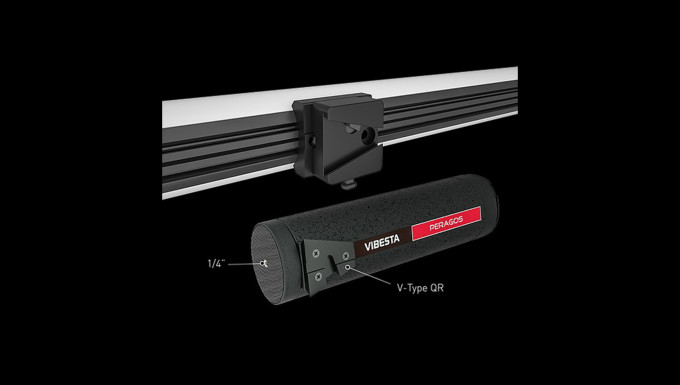
There is a V-Type Quick Release that allows you to quickly attach and detach the controller unit and smart Li-Ion battery pack to the backside of the tube. A female QR point is in the center of the tube for fitting grip accessories like a Spigot. Additional ¼ inch threadings allow for more rigging options.

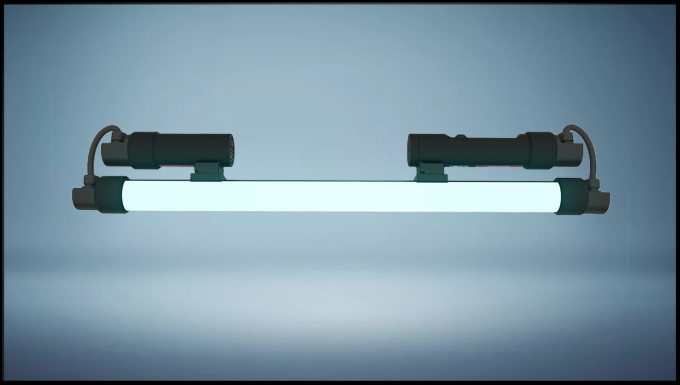
I’m not quite sure why there is a Boost Mode as it doesn’t impose any restrictions on using the light when it is turned on.
Runs Silent
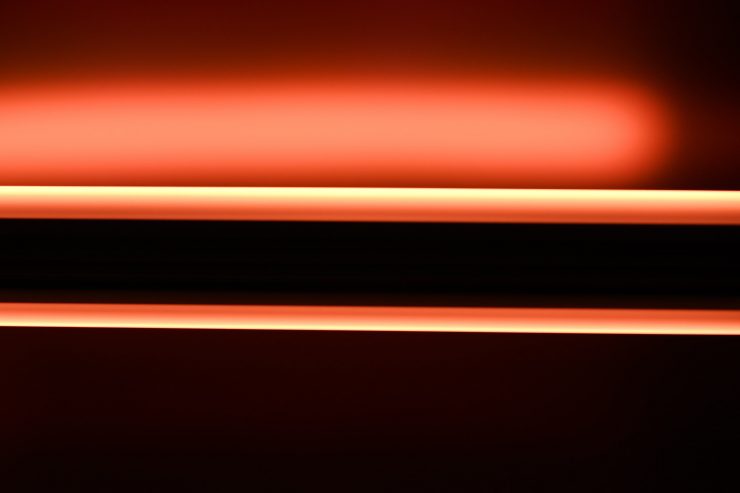
The Vibesta Peragos 120C Pixel doesn’t have any type of fan so it runs completely silent. Because it doesn’t have a fan it does quite hot to the touch after you have left it on for a while. Why does it get hot? Well, heat has to be dispersed in some way, and with these lights that heat is dispersed through the aluminum body.
High Speed Mode
The Peragos 120C PIXEL can be set at up to a whopping 128,000 Hz. This means it doesn’t matter what frame rate or shutter speed you use, you won’t get any flicker.
Mounting
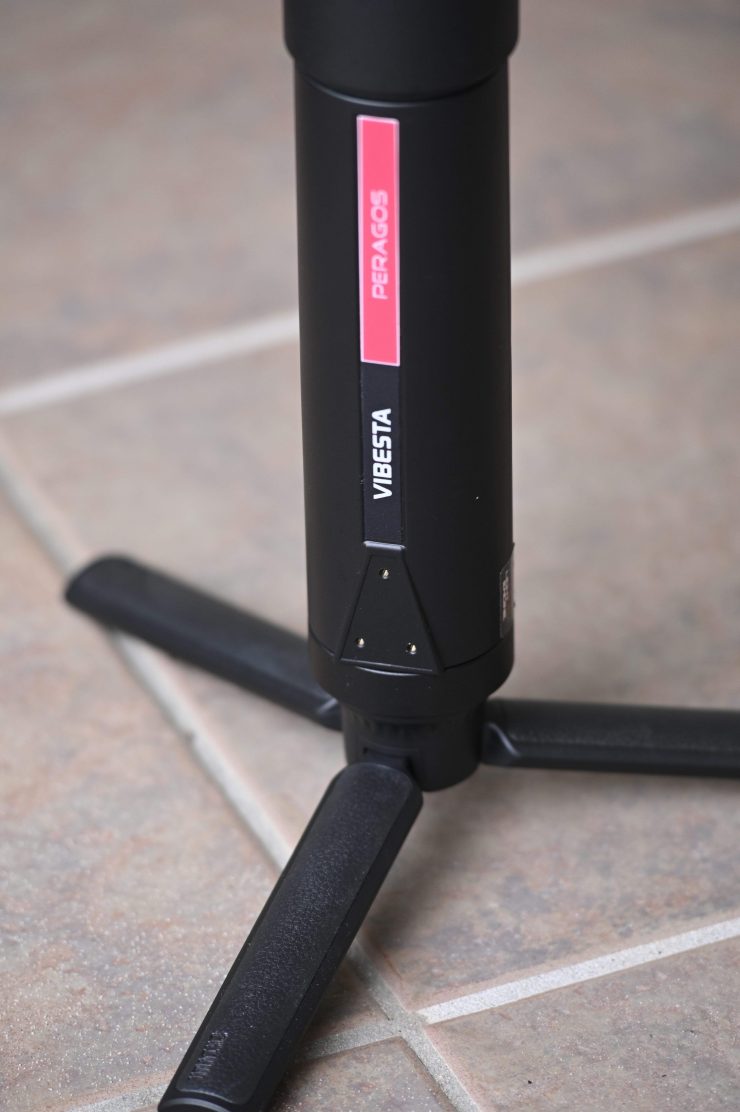
Mounting tube lights has always been a little tricky. Because of their form factor, they usually require specific types of mounting solutions.
The Peragos tubes feature a variety of mounting points and there is a range of accessories for creating additional rigging solutions.

1/4″ Female

Suspension Ring

Ground Light Stand

16 mm Pin
As I mentioned earlier, tube lights can be a pain to mount. You really need some of these accessories to safely and securely mount the light.
RTX Control App

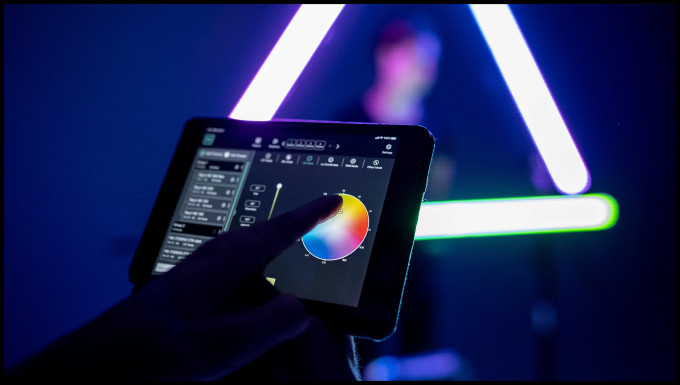
With the RTX control App you can create complex lighting setups.
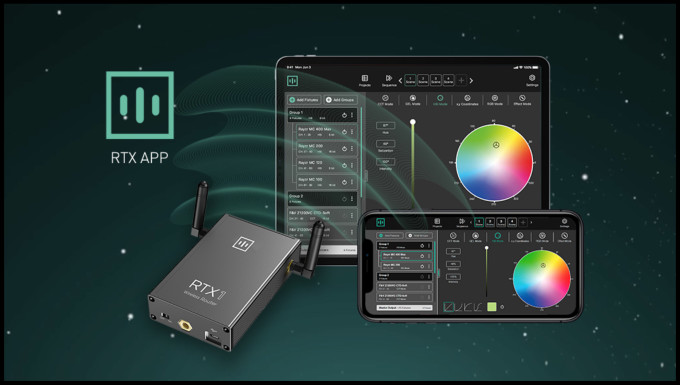
It utilizes an intuitive user interface coupled with advanced control functions that enables you to control each light separately or in groups of lights.
The catch is, you need to use the optional RTX1 router for App control or Wifi remote.
The RTX tec System
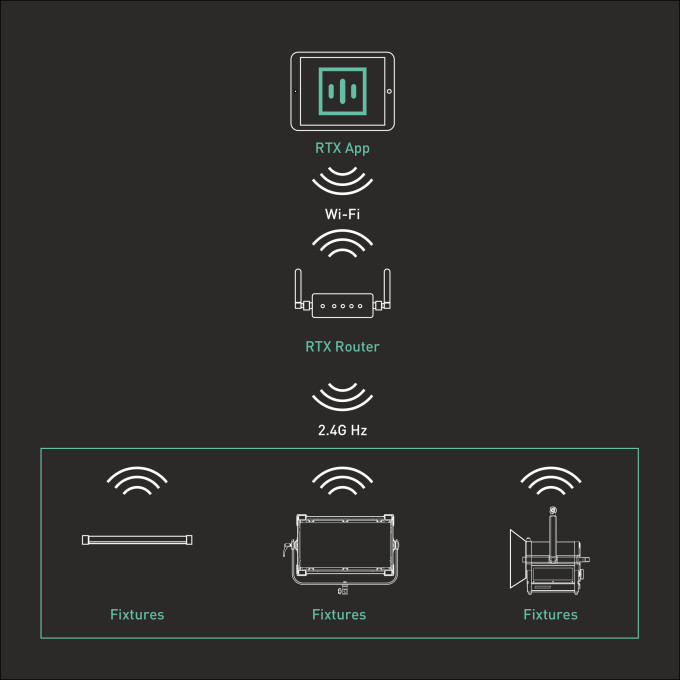
The hardware and software of the RTXtec control system are designed to support large lighting setups reliably and with ease.
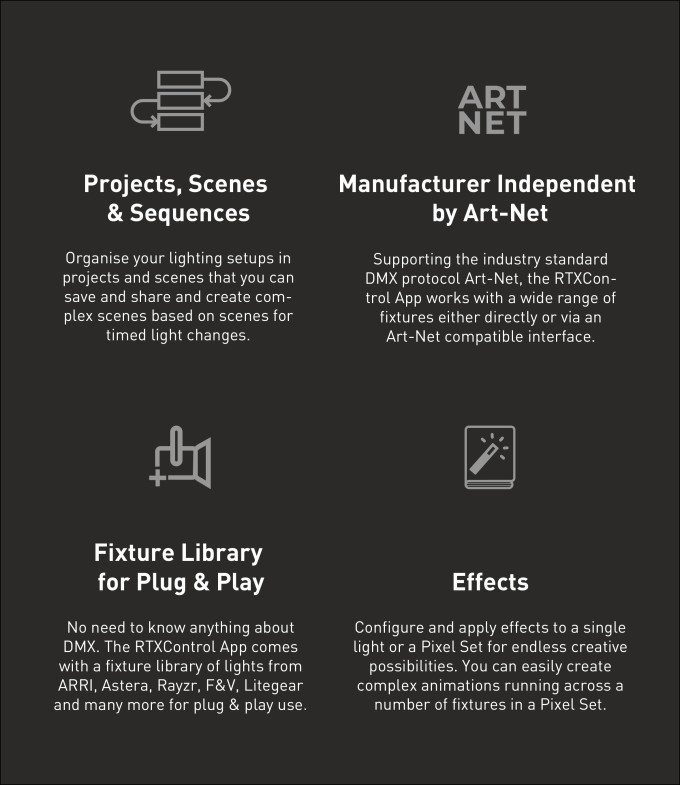
I do wish that the light just had built-in WiFi or Bluetooth so you could control it directly from an app.
Photometrics
So now let’s get to the photometric results. I always test lights in this way so that I get a reference to how they compare to other fixtures. Results only tell part of the story and should never be used alone to judge a light. I have found from extensive testing over the years that certain lights that have good photometric results don’t always look good, and lights that have worse photometric scores can sometimes look better than their results indicate.
Different lights can also look different depending on what camera you happen to be using.
Output & Color Temperature Accuracy
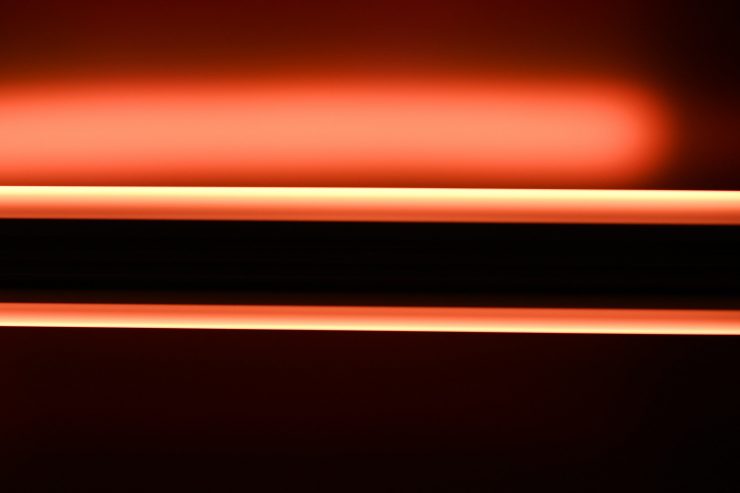
I tested the Peragos 120C Pixel at a variety of Kelvin color temperatures with a Sekonic C-800 Spectrometer to find out how much output the light had and how accurate the Kelvin color temperature reproduction was. All readings are taken at a distance of 1m (3.28ft) in a controlled environment. Now the light can be set between Boost and Normal outputs. This will vary the output of the light.
5600K
5600K (Normal Mode)
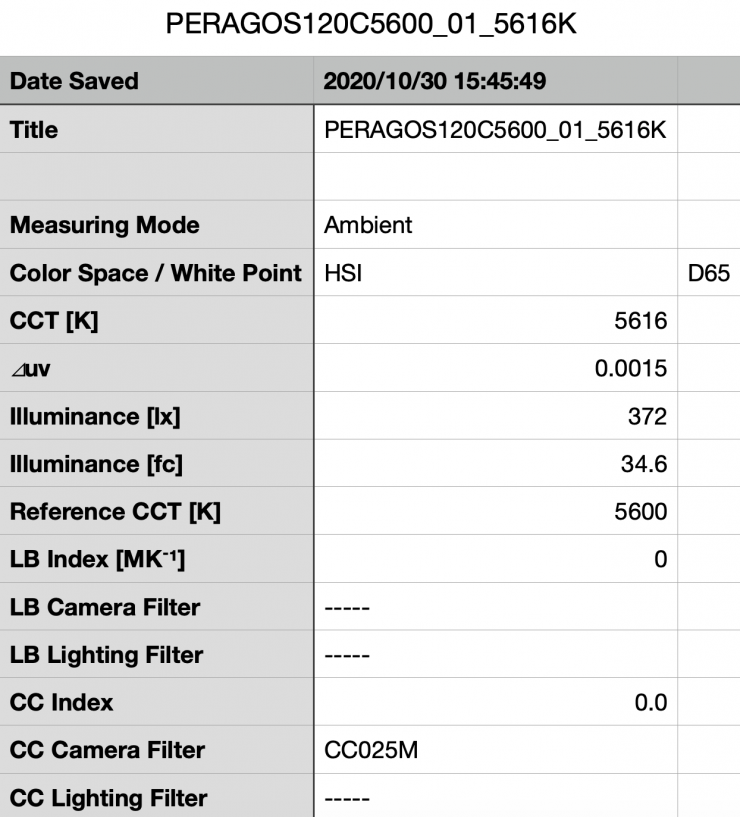
Above you can see the Peragos 120C Pixel recorded an output of 372 lx (34.6 fc) when set at 5600K. This is not a lot of output, but in saying that, I have found from past experience that you don’t need lights like this to have a ton of output for a lot of applications. You also need to take into account that this light is getting spread over quite a large area given the length of the fixture.
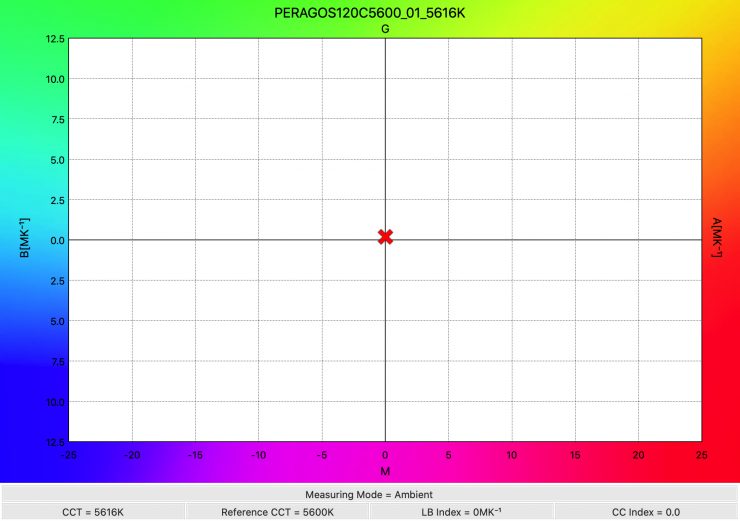
The Peragos 120C Pixel produced a Kelvin color temperature of 5616K. The light had a CC Index score of 0.20. The Kelvin color temperature it produces was almost spot on. This is a very accurate reading.
5600K (Boost)
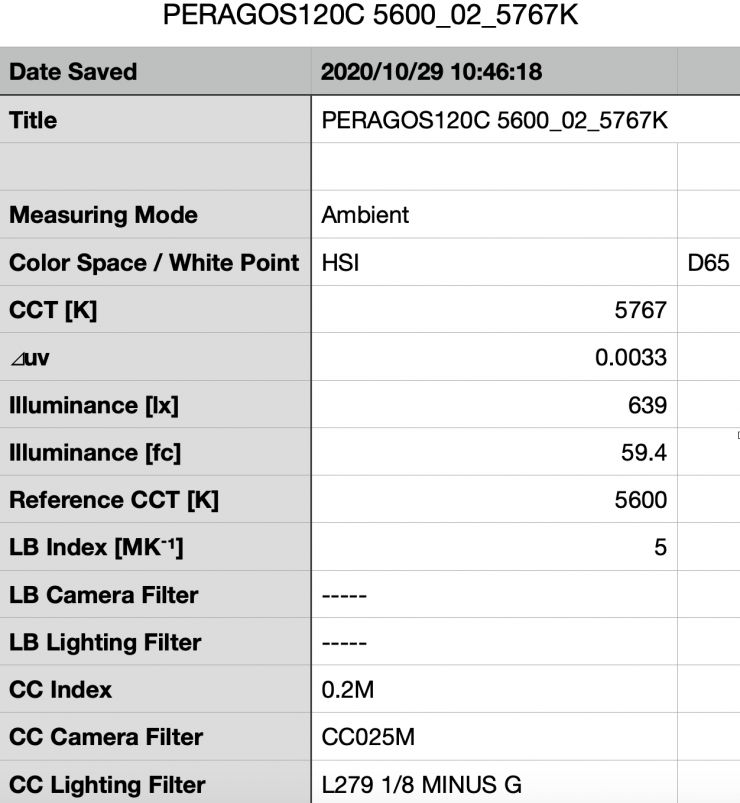
Above you can see the Peragos 120C Pixel recorded an output of 639 lx (59.4 fc) when set at 5600K.
As a comparison, the Ledgo AltaTube 120C had an output of 1740 lx (162 fc) when set at 5600K.
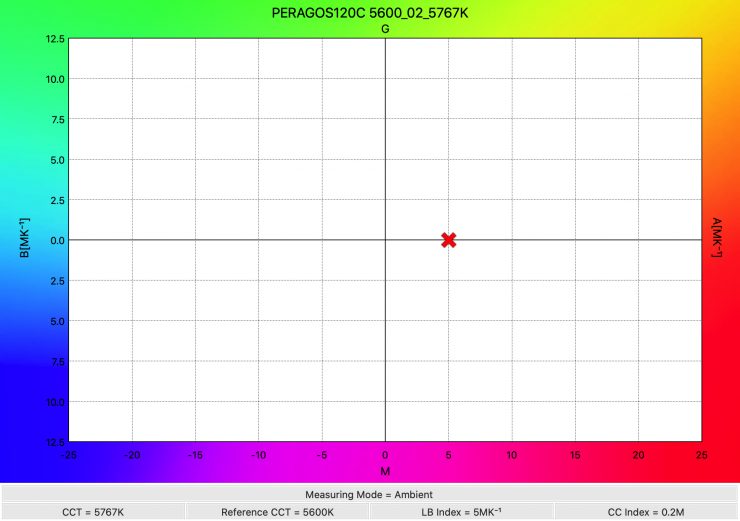
The Peragos 120C Pixel produced a Kelvin color temperature of 5767K. The light had a CC Index score of 0.2M. The Kelvin color temperature it produces was a tad high for a 5600K source.
Again as a comparison, the Ledgo AltaTube 120C produced a Kelvin color temperature of 5504K and had a CC Index score of 0.8G.
5600K Battery Powered (Boost Mode)
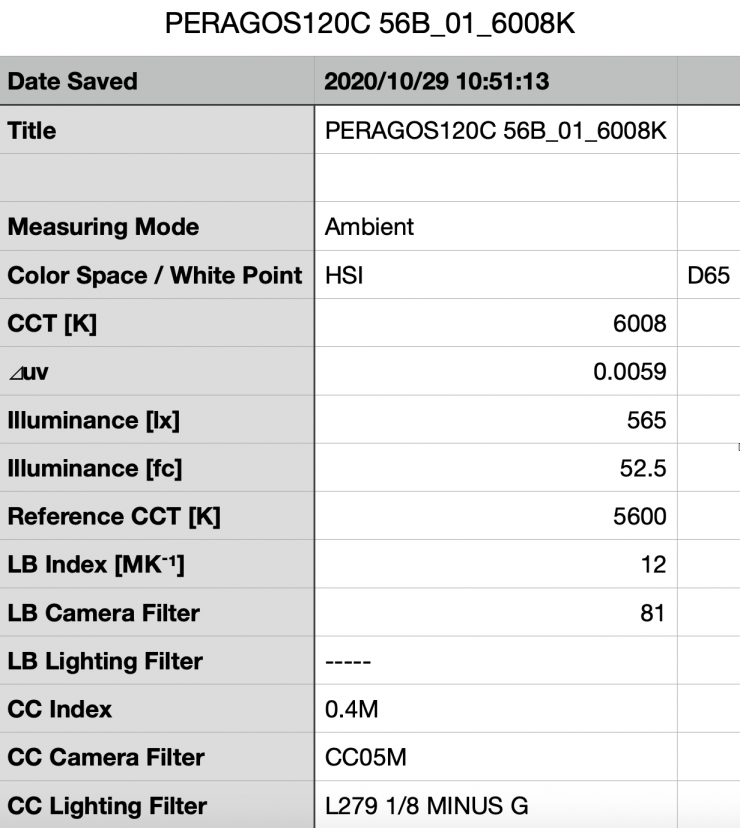
As the light can also be powered via a rechargeable battery I decided to also test it at 5600K to see if there was any loss in output, Above you can see that the 120C recorded an output of 565lx (52.5 fc). This was 74lx less than the 639 lx (59.4 fc) it produced when running off mains power.
5600K Battery Powered (Normal Mode)
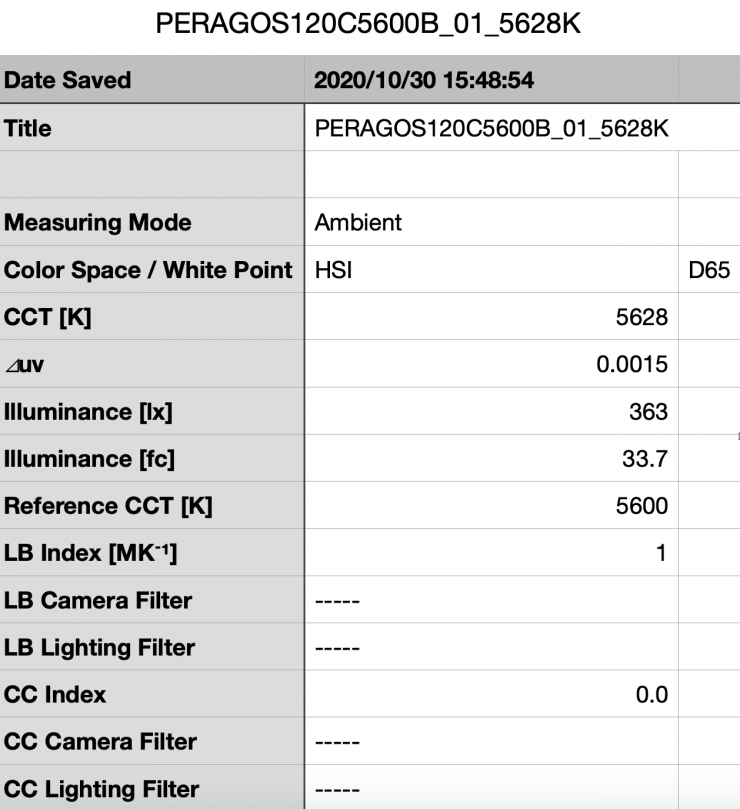
Above you can see that the 120C recorded an output of 363 lx (34.6 fc). This was only 9 lx less than the 372 lx (59.4 fc) it produced when running off mains power.
3200K
3200K (Normal Mode)
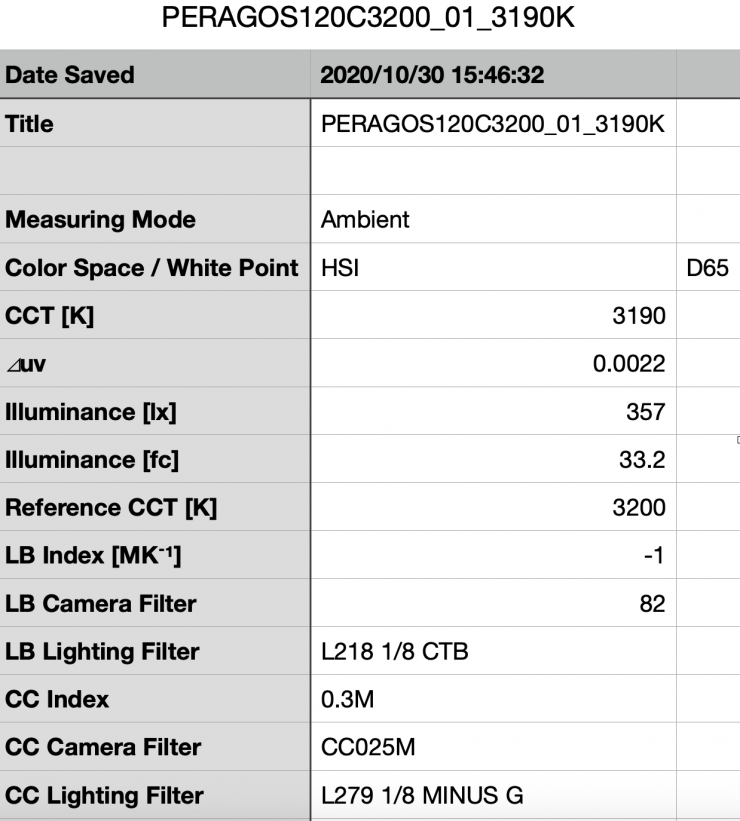
Above you can see the lights output when it was set at 3200K. It produced 357 lx (33.2 fc), which was just 4% less than the 372 lx it produced at 5600K.
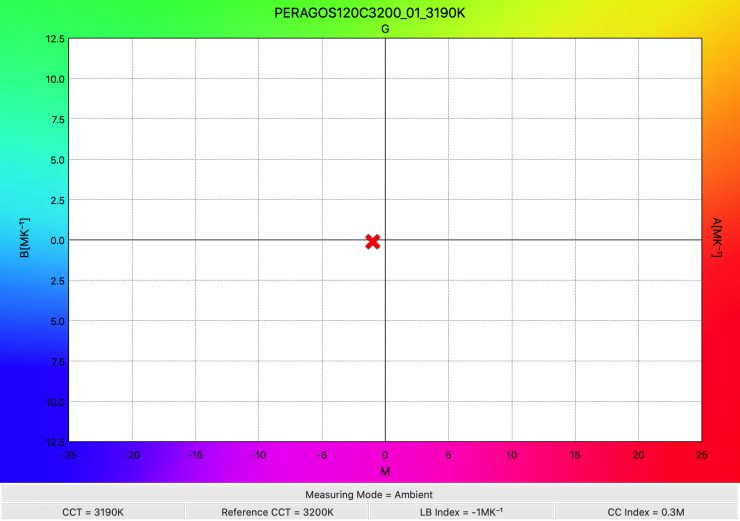
As far as Kelvin color temperature accuracy goes, it recorded a reading of 3190K and a CC Index score of 0.3M. Again the Kelvin color accuracy, just like at 5600K, was very impressive.
3200K (Boost Mode)
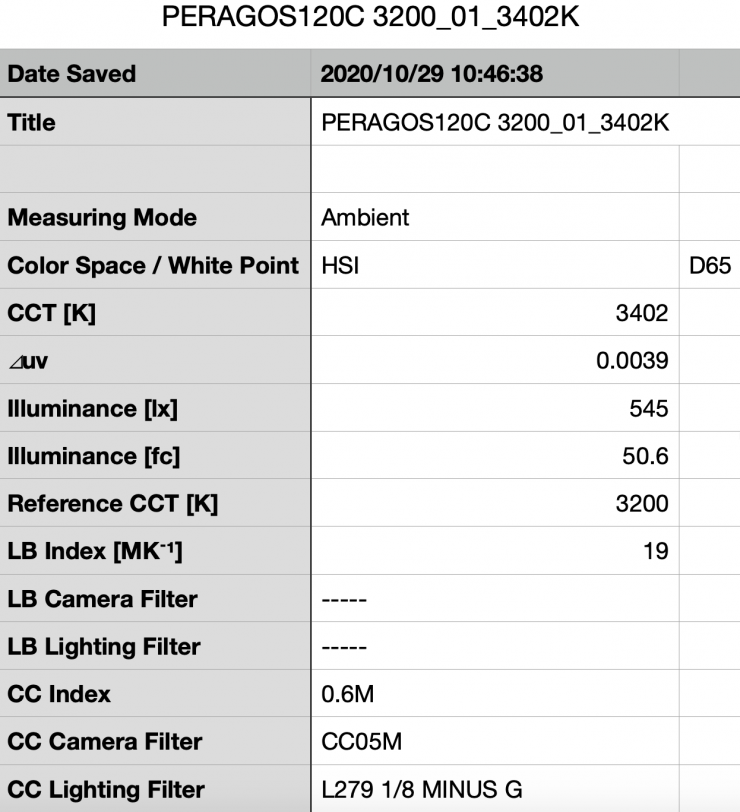
Above you can see the lights output when it was set at 3200K. It produced 546 lx (50.6 fc), which was 14.7% less than the 639 lx it produced at 5600K.
As a comparison. the Ledgo AltaTube 120C produced 1420 lx (132 fc) at 3200K.
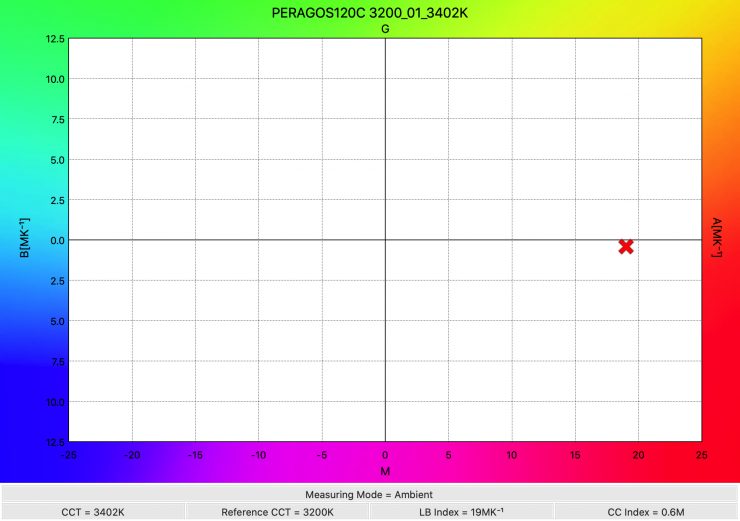
As far as Kelvin color temperature accuracy goes, it recorded a reading of 3402K and a CC Index score of 0.6M This was a little higher than it should be.
Again, as a comparison, the Ledgo AltaTube 120C recorded a Kelvin color temperature of 3257K and a CC Index score of 0.7G.
I also measured the light at various other Kelvin color temperatures to see how it performed.
Summary of results at various Kelvin Color Temperatures
| OUTPUT NORMAL | OUTPUT BOOST | KELVIN NORMAL | KELVIN BOOST | |
| 2500K | 341 lx | 474 lx | 2512K | 2656K |
| 3200K | 357 lx | 545 lx | 3190K | 3402K |
| 4400K | 395 lx | 609 lx | 4448K | 4702K |
| 5600K | 372 lx | 639 lx | 5616K | 5767K |
| 6500K | 339 lx | 605 lx | 6431K | 6695K |
| 8000K | 331 lx | 605 lx | 7799K | 8090lx |
| 9999K | 453 lx | 586 lx | 9764K | 9893K |
These results show me that the lights output is fairly consistent at most key Kelvin color temperature, especially at 2500K to 8000K.
The results also show me that the light is very color accurate in the Normal Mode from 2500K up to 6500K.
HSI
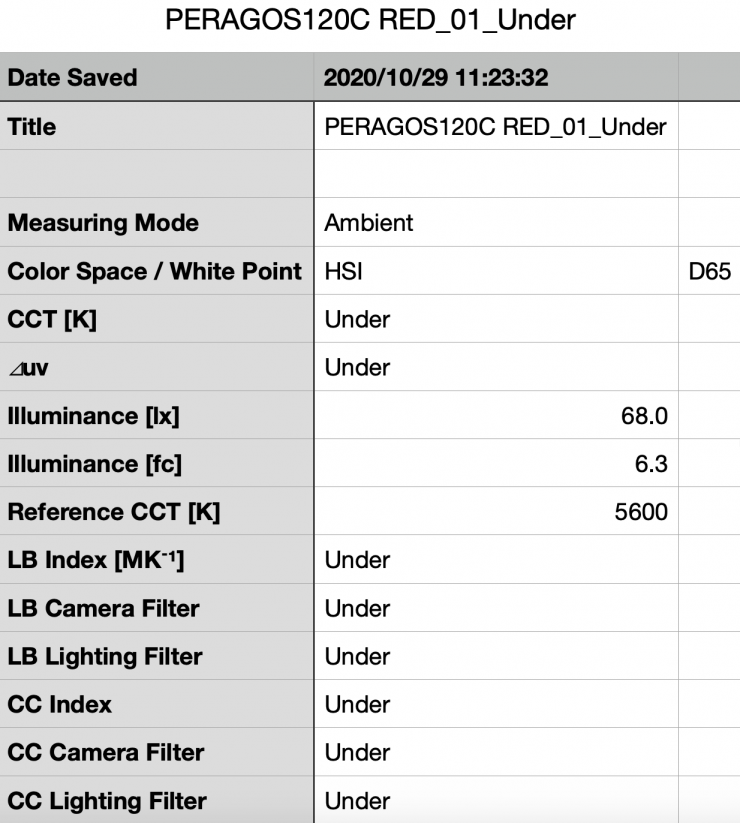
I also wanted to check how much output the light had when set it at 100% intensity and recorded the output for pure red. As you can see the output is massively reduced when you start using the light to generate pure colors.
Color Rendering
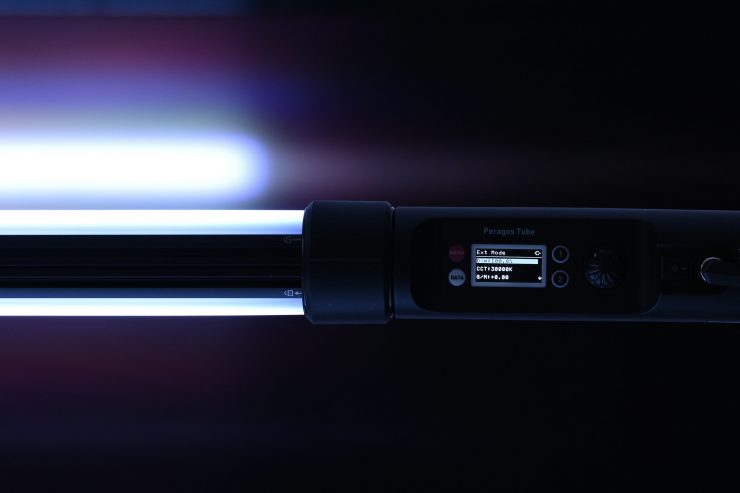
So now that we have seen how much output the Peragos 120C Pixel produces, how does it perform when it comes to replicating accurate colors.? Well, let’s find out.
5600K
5600K (Normal Mode)
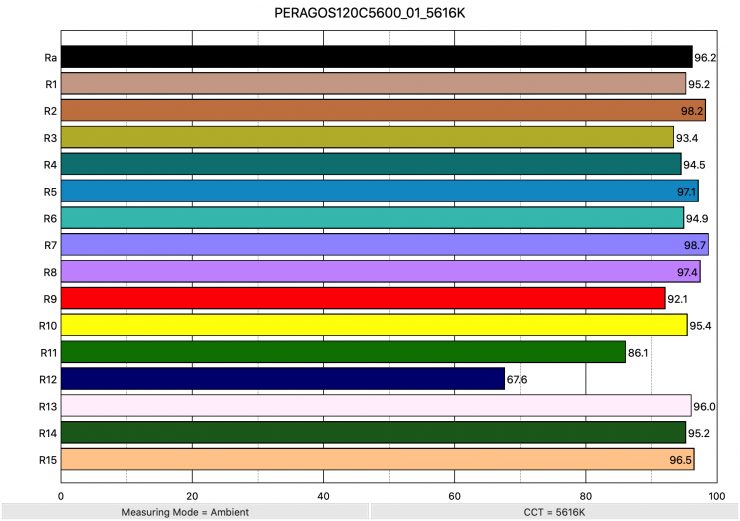
Above you can see that when the light was set at 5600K in the Normal Mode it recorded an average CRI (R1-R8) of 96.2 and an extended CRI (R1-R15) of 93.22. For replicating accurate skin tones it recorded 92.1 for R9 (red), 96.0 for R13 (closest to caucasian skin tones), and 96.5 for R15 (closest to Asian skin tones). These results were good for an LED fixture.
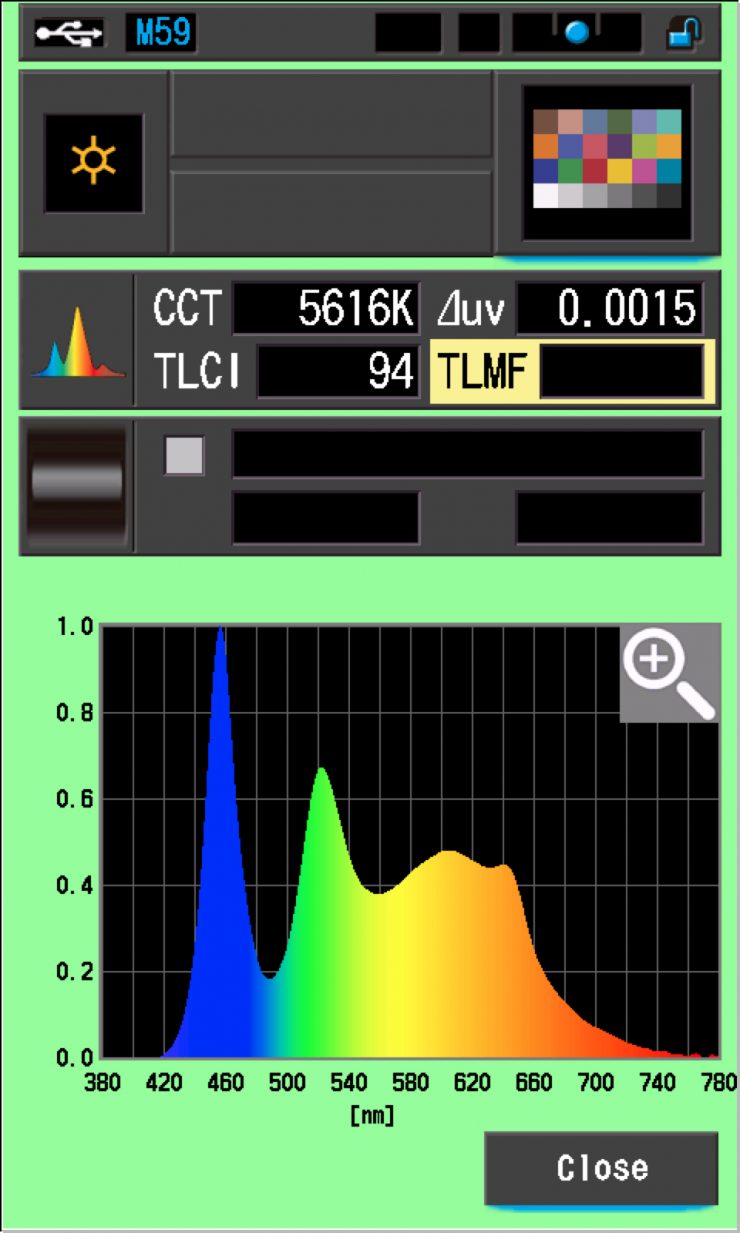
The light, when set at 5600K, recorded a TLCI score of 94.
5600K (Boost)
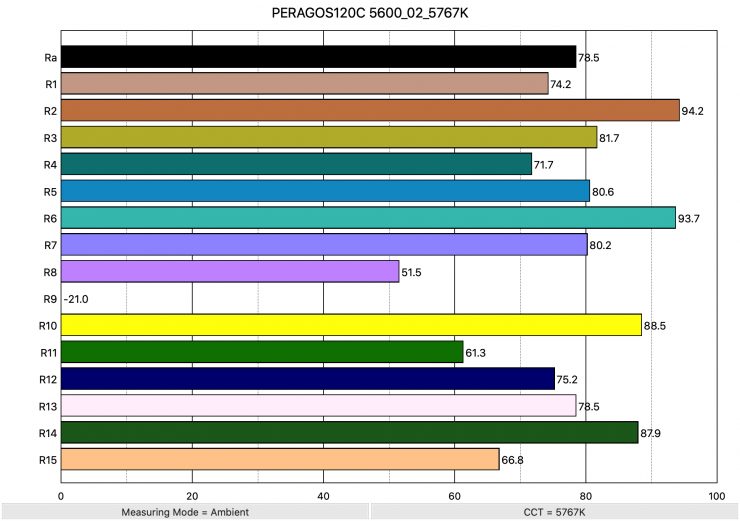
Above you can see that when the light was set at 5600K in the Boost Mode it recorded an average CRI (R1-R8) of 78.5 and an extended CRI (R1-R15) of 92.2. For replicating accurate skin tones it recorded -21.0 for R9 (red), 78.5 for R13 (closest to caucasian skin tones), and 68.8 for R15 (closest to Asian skin tones). These results were very bad for any LED light. being made in 2020.
I was very puzzled by this result so I reached out to Vibesta. They told me that, ‘This is the second prototype generation. We implemented the boost mode with it but when we tested it we found that some LEDs reach their maximum brightness earlier than others, which makes the light at the brightest settings unbalanced regarding the spectrum which reduces the color reproduction. Because of this, the final unit will get additional LEDs so that it performs consistently regarding color reproduction throughout the whole brightness range.’
With this in mind, I won’t show you any more results with the Boost Mode turned on.
3200K (Normal Mode)
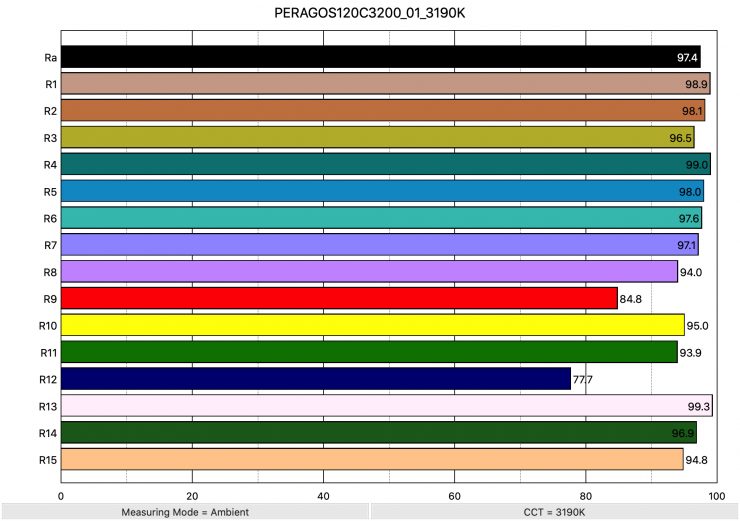
Above you can see the scores for when the light was used at 3200K. It recorded an average CRI (R1-R8) of 97.4 and an extended CRI (R1-R15) of 94.77. For replicating accurate skin tones it recorded 84.8 for R9 (red), 99.3 for R13 (closest to caucasian skin tones), and 94.8 for R15 (closest to Asian skin tones).
Just like at 5600K these results were pretty good.
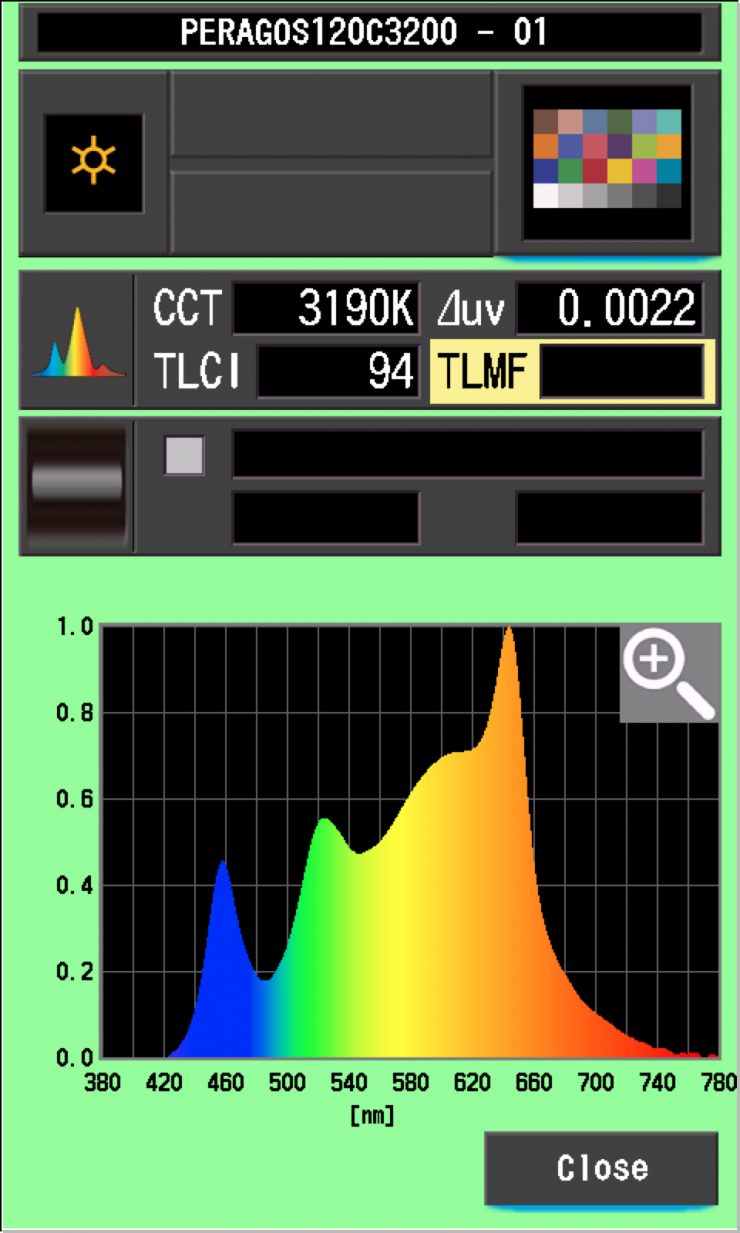
The light, when set at 3200K, recorded a TLCI score of 94.
As a comparison, below you can see the color rendering scores for the Ledgo AltaTube 120C.
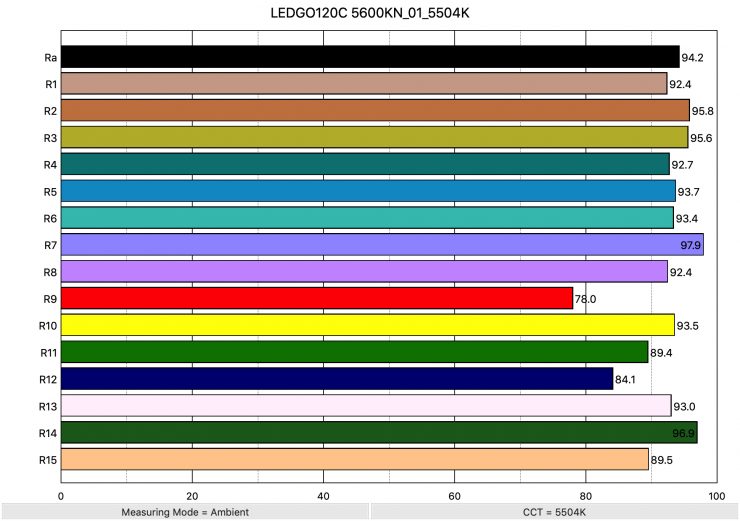
Above you can see that when the light was set at 5600K it recorded an average CRI (R1-R8) of 94.2 and an extended CRI (R1-R15) of 91.88. For replicating accurate skin tones it recorded for 78 for R9 (red), 93 for R13 (closest to caucasian skin tones), and 89.5 for R15 (closest to Asian skin tones). These were reasonably good results, but you can see why the light has a slight push towards green as it has trouble reproducing red.
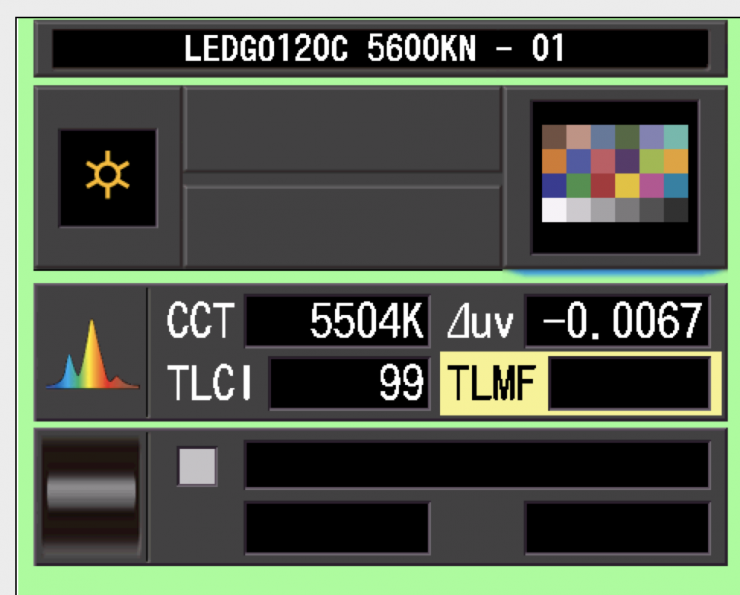
The Ledgo when set at 5600K recorded a TLCI score of 97.
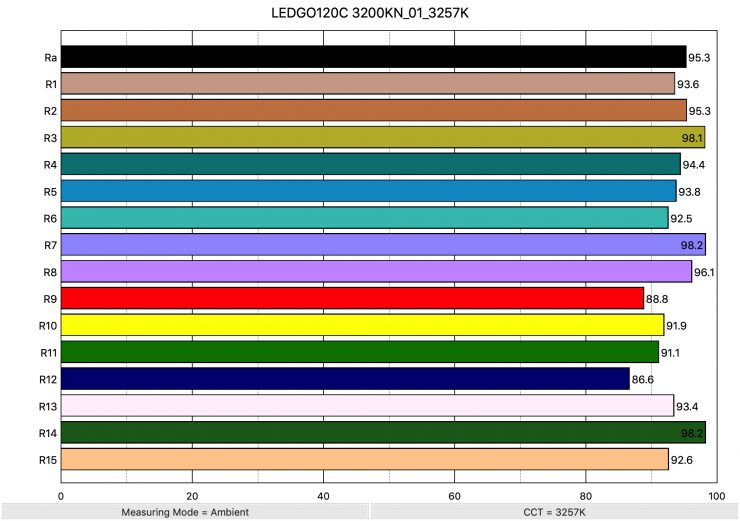
Above you can see the scores for when the Ledgo was used at 3200K. It recorded an average CRI (R1-R8) of 95.3 and an extended CRI (R1-R15) of 83.64. For replicating accurate skin tones it recorded 88.8 for R9 (red), 93.4 for R13 (closest to caucasian skin tones), and 92.6 for R15 (closest to Asian skin tones).
Just like at 5600K these results were reasonably good.
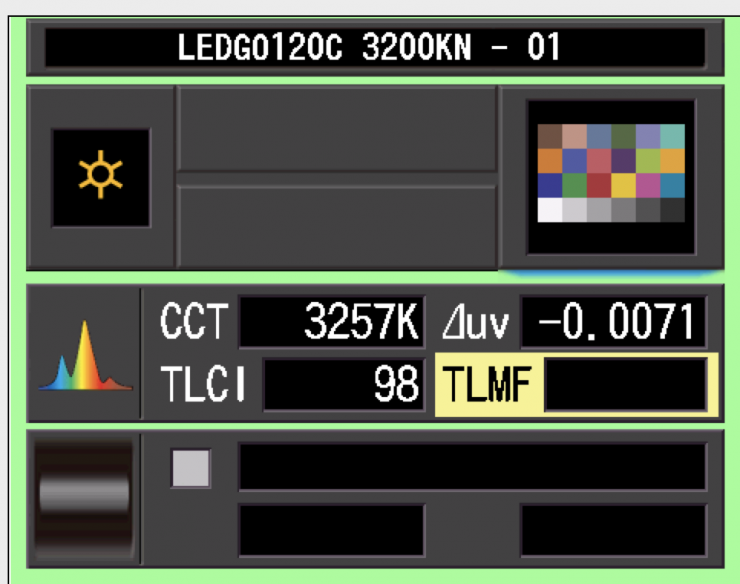
The Ledgo, when set at 3200K, recorded a TLCI score of 98.
CC Index & ⊿uv
The CC Index displays the CC correction value and whether any magenta or green need to be added or subtracted. 1 CC corresponds to 035 Kodak CC values or 1/8 Rosco filter values. Any reading less than +1.00 or -1.00 and you’re probably not going to need to make any kind of adjustment. The ⊿uv is the value to show how much this light is away from being an ideal light source (black body radiation = incandescent lamp). As with the CC Index you want this number to theoretically be zero. Kelvin is not a linear value, so we need to convert from Kelvin to MK-1 to compare the values of color temperature. To calculate from Kelvin to Mired is MK-1= 1*1000000/Kelvin. While this may sound confusing, it is the only way of measuring if the Kelvin shift is significant enough to warrant having to use a filter for correction. Below are the results for the Peragos 120C PIXEL:
Kelvin Vs MK-1
| Kelvin | Difference in K | MK-1 | Difference in MK-1 | |
| SET VALUE | 2500K | 0 | 400 | 0 |
| ACTUAL READING | 2512K | 12 | 398 | 2 MK-1 |
| SET VALUE | 3200K | 0 | 312.5 | 0 |
| ACTUAL READING | 3190K | 10 | 313.47 | -0.97 MK-1 |
| SET VALUE | 4400K | 0 | 227.27 | 0 |
| ACTUAL READING | 4448K | 48 | 224.82 | 2.45 MK-1 |
| SET VALUE | 5600K | 0 | 178.57 | 0 |
| ACTUAL READING | 5616K | 16 | 178.06 | 0.51 MK-1 |
| SET VALUE | 6500K | 0 | 153.84 | 0 |
| ACTUAL READING | 6431K | 69 | 155.49 | -1.65 MK-1 |
| SET VALUE | 8000K | 0 | 125 | 0 |
| ACTUAL READING | 7779K | 221 | 128.55 | -3.55 MK-1 |
| SET VALUE | 9990K | 0 | 100.10 | 0 |
| ACTUAL READING | 9764K | 226 | 102.41 | -2.31 MK-1 |
These figures might look confusing, but what it tells me is that the light is very Kelvin color accurate at all temperatures. Any MK-1 score that is under -9/9 means you wouldn’t have to use any color correction gels. The MK-1 scores for this light were extremely good.
CC INDEX & ⊿uv
| CC INDEX | ⊿uv | |
| 2500K | 0.2G | -0.0008 |
| 3200K | 0.3M | 0.0022 |
| 4400K | 0.2M | 0.0012 |
| 5600K | 0.0 | 0.0015 |
| 6500K | 0.1G | 0.0011 |
| 8000K | 0.5G | 0.0004 |
| 9990K | 0.8G | 0.0004 |
SSI
SSI (Spectral Similarity Index) was developed by the Sci-Tech Council of the Academy. SSI gives me the ability to set any light as a standard, or use predefined standards (such as CIE D55), and then give other lights an SSI score based upon how well they will match standards such as CIE D55 measure spectral response and compare it directly against an ideal light source.
3200K
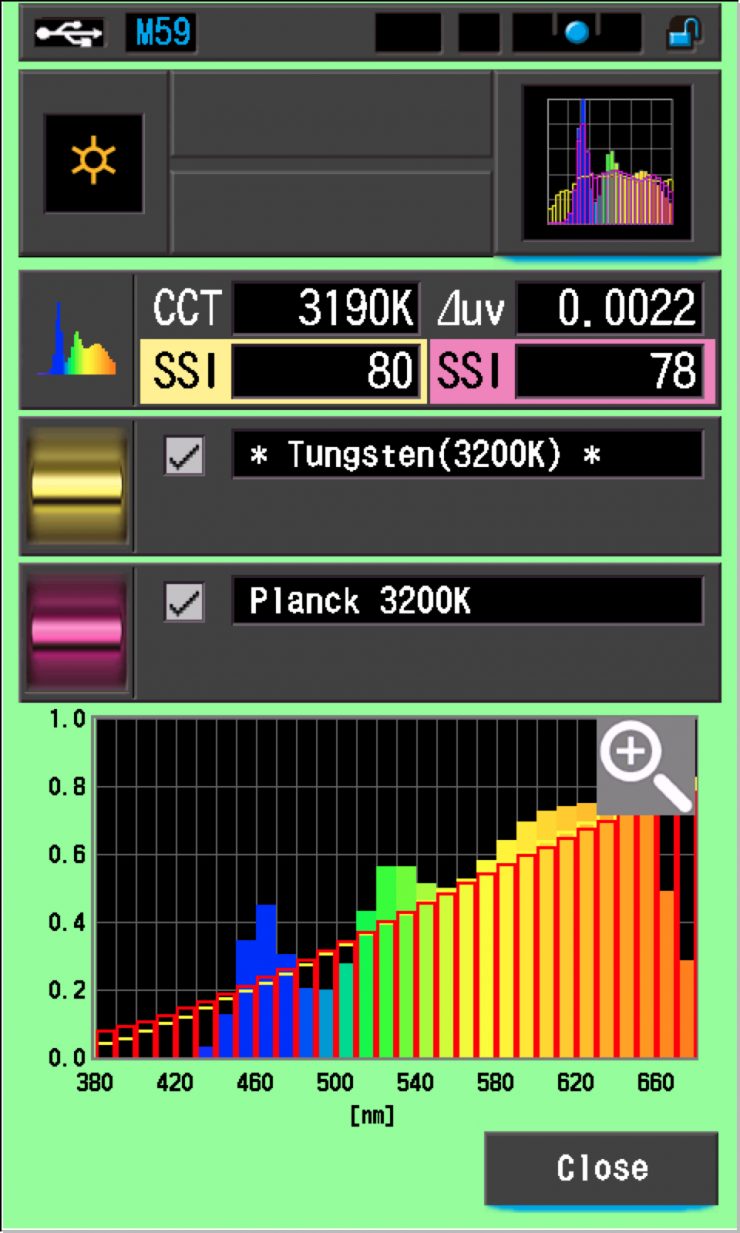
In this graph, the red bars indicate a perfect 3200 (Tungsten source. The Red bars indicate a Planck 3200K source. This lets us compare how close to a perfect 3200K lighting source the 120C PIXEL is.
A score in the high 70’s or low 80’s is fairly normal for a 3200K LED source.
5600K
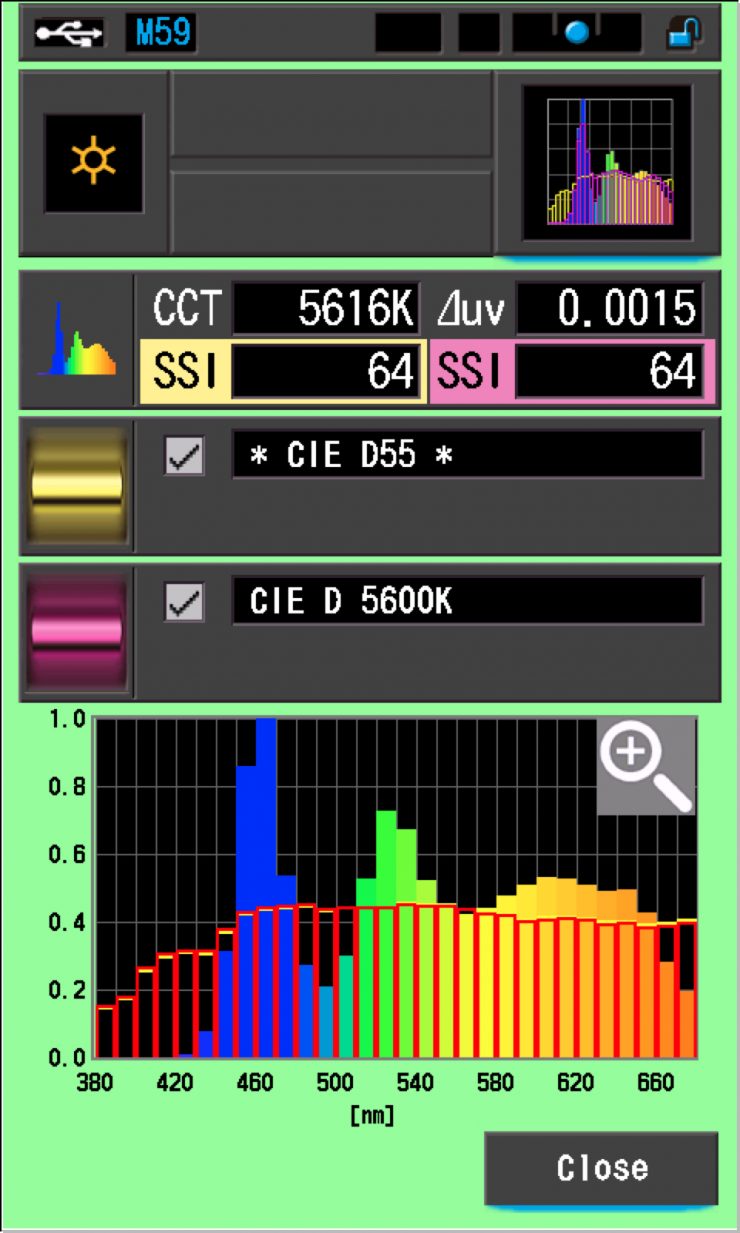
In this graph, the red bars indicate a perfect CIE D 5600K source. The Red bars indicate a perfect CIE D55 source. This lets us compare how close to a perfect 5600K lighting source the 120C Pixel is.
It is usual to see a score in the low 70’s for a 5600K LED source. This light scored in the low 60’s which wasn’t great.
The scores show that the light does a pretty good job of accurately replicating a 3200K (Tungsten) source, but it’s not nearly as good at replicating a 5600K source.
The main reason we want to record SSI scores is so we can see how well they match with other lights. I was curious to see how well the Peragos 120C Pixel matched an Intellytech Litecloth C160 at 3200K and 5600K. Why would I want to do this? Well, if for example I wanted to use the Intellytech as my main key source and I wanted to use the Peragos as a backlight/hair light I want to know how well they will match.
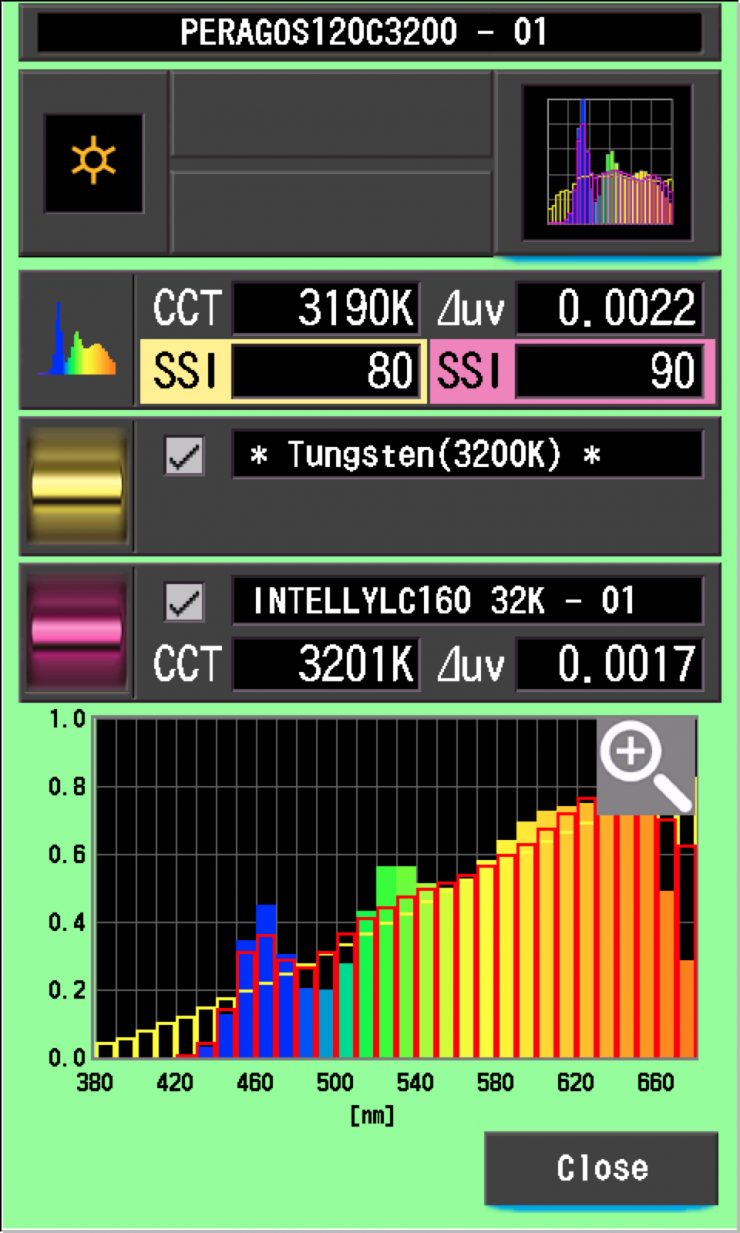
As you can see the lights match reasonably well. Any SSI scores you can get that are in the 90s when trying to match lights is going to get you pretty good consistent results. It also gives me the information I need to make adjustments to my lights to get them to better match.
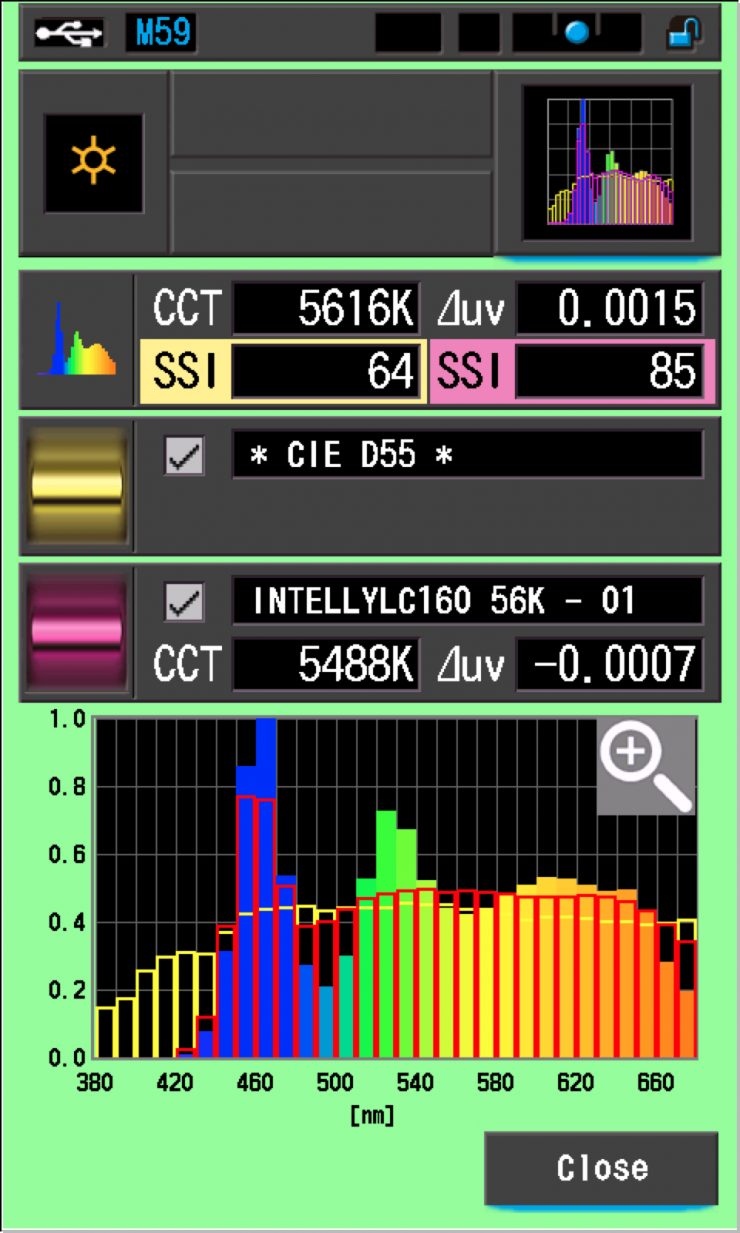
At 5600K, the lights weren’t as good of a match. You would have to make some adjustments to the lights to try and get them to match more closely.
If you want to get certain lights to match with the Peragos 120C Pixel you can by using the x,y Coordinates mode. If you have something like a Sekonic C-700 or C-800 you can measure the x,y coordinates of a light, and then dial in those same coordinates into the Peragos 120C Pixel so they match.
Spectral Distribution
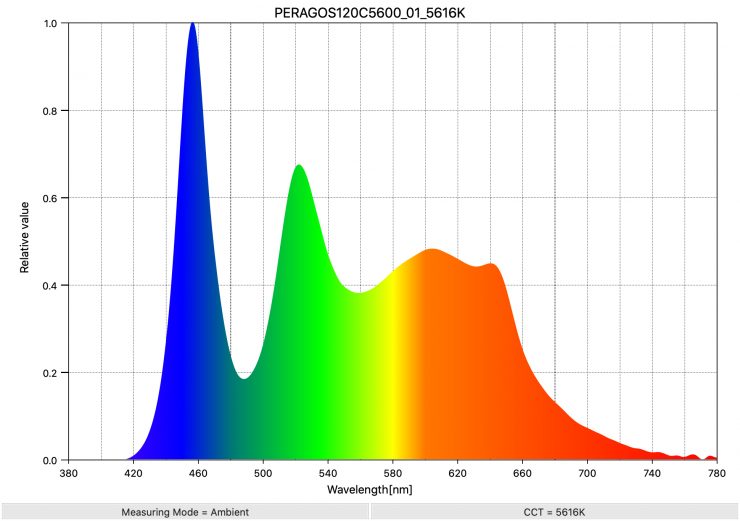
Above you can see the spectral distribution of the 120C PIXEL when it is set at 5600K. The spectral distribution is not very full and there is a large noticeable green spike.
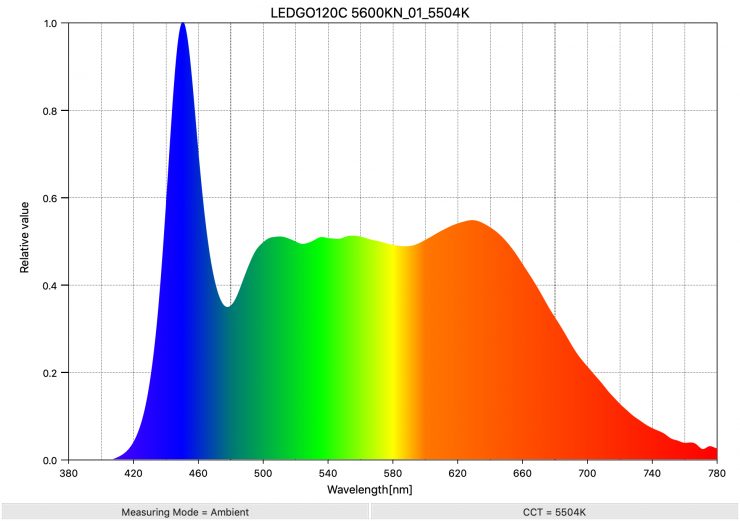
As a comparison, above you can see the spectral distribution of the Ledgo AltaTube 120C at 5600K.
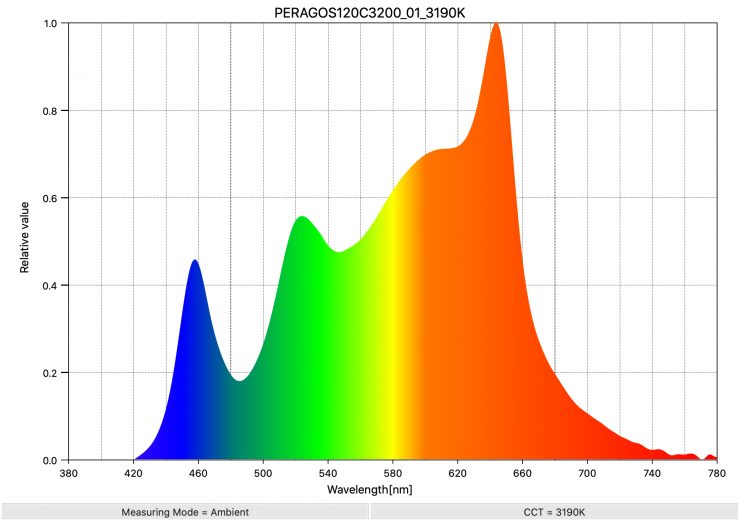
Above you can see the spectral distribution of the 120C PIXEL when it is set at 3200K. The spectral distribution is not the best for a LED light being used at 3200K. It is missing information is the spectrum and it has a noticeable green spike.
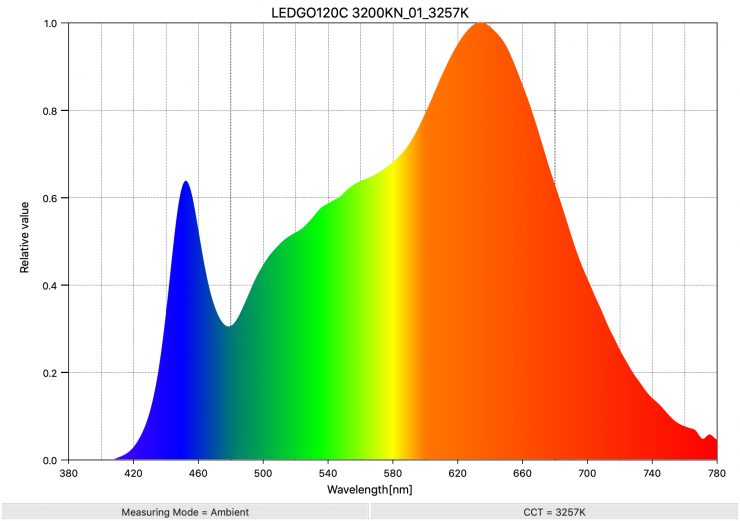
AS a comparison, above you can see the spectral distribution of the Ledgo AltaTube 120C when used at 3200K.
Real-World Performance & Quality of Light
As I always say, photometric scores only tell you part of the story. So do the scores from the Peragos 120C Pixel, translate into real-world performance? Despite not having the best photometric scores the quality of the light that is coming from the 120C Pixel is pretty good.
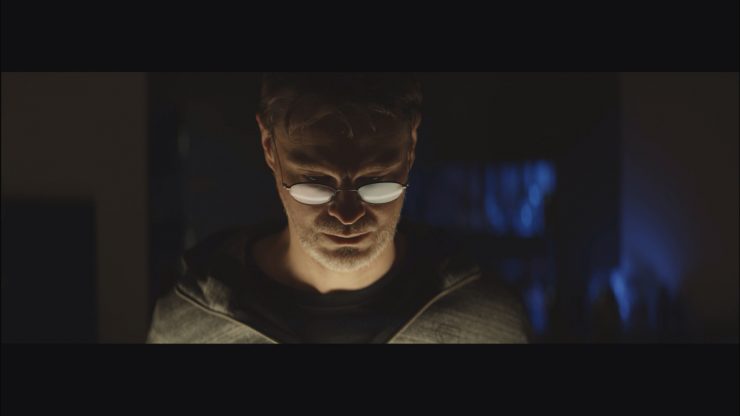
The light doesn’t have a ton of output, but I didn’t’ really find that to be a problem for what I would personally use the fixture for. If you are using it as a hair light or a practical it has enough grunt for those applications. If you wanted to use it as a key light source, you certainly could, depending on the conditions you were working in. If you are in control of your environment then yes, you can use them as a key light.
If you wanted to create a larger more powerful source you could always utilize multiple tube lights.
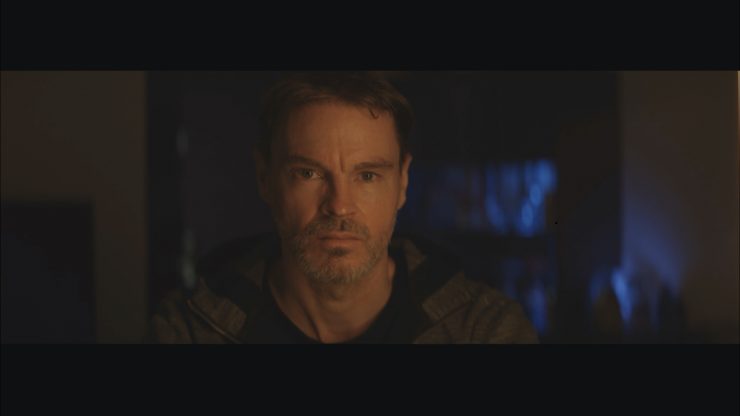
Above you can see a ton of shots where I was just messing around shooting myself using the Vibesta Peragos 120C Pixel (please excuse thew focus on some of them!) The only other light sources being used are a couple of small LED lights in the background. The great thing for me about tube lights like these is you can just quickly move and position them to change the whole look of your lighting. They are really good tools for creating very stylized lighting results.
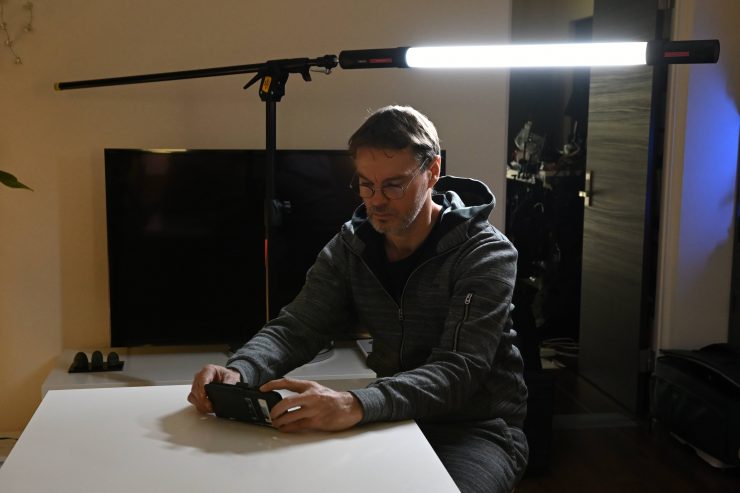
Above you can see some frames of where I had the light positioned.
Who are they aimed at?
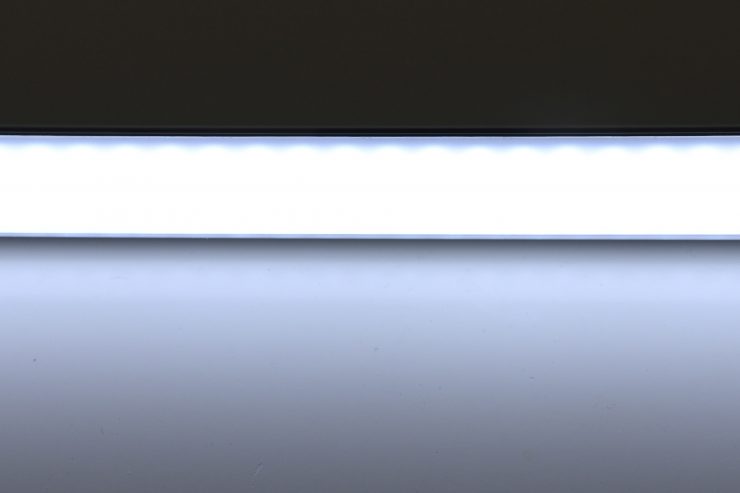
You could use the Peragos 120C Pixel for lots of different applications. Tube lights such as these are fairly versatile and you could use them as ascent lights, interview lights, replacements for practicals, etc, etc. It is really only up to your imagination as to what you could do with a light like this.
Having the ability to run the light off both battery and mains power certainly makes it very versatile. It is good to know that it is also IP 66 rated so you can use it out in the elements.
Price & Availability
The light is very well priced given its capabilities. The 120C Pixel Premium Pack retails for €399 (around $465 USD).
Competition
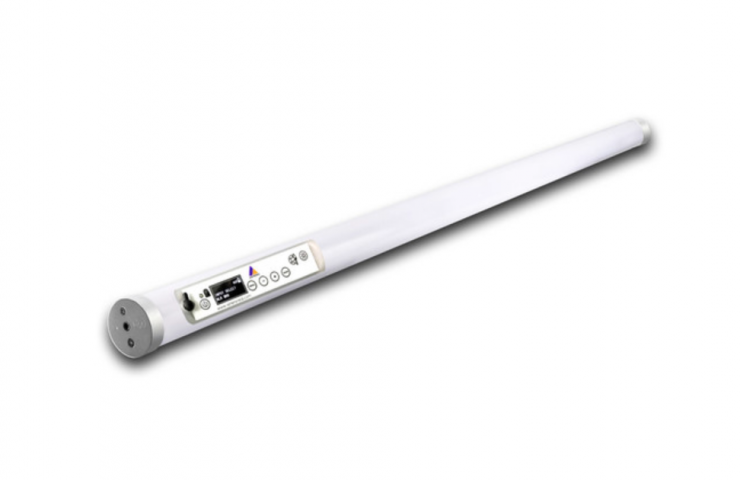
The main competition comes in the form of lights such as the Digital Sputnik Voyager (4′), which costs $690 USD, the Astera TitanTube Power Kit ($850 USD), Came-TV Boltzen Andromeda Slim Tube LED Light 4FT ($348 USD), Ledgo AltaTube 120C ($575 USD), and Nanlite PavoTube 30C 4′ RGBW LED Tube with Internal Battery.
At around $465 USD, the Vibesta Peragos 120C PIXEL is more likely to directly compete with the options from Came-TV, Ledgo, and Nanlite. So let’s look at the differences:
| PERAGOS 120C PIXEL | CAME-TV BOLTZEN ADROMEDA | LEDGO ALTATUBE 120C | NANLITE PAVOTUBE 30C | |
| POWER | 60-80W | 40W | 120W | 32W |
| IP RATING | IP66 | NA | NA | NA |
| CCT RANGE | 2800-13000K | 2000-9999K | 2500-7500K | 2700- 5600K |
| EXTENDED CCT RANGE | 1500-30000K | No | No | No |
| PIXEL CONTROL | Yes up to 32 Pixels | No | No | No |
| G/M CORRECTION | Yes | No | No | No |
| DIGITEL GELS | Yes | No | Yes | No |
| HSI Mode | Yes | No | Yes | No |
| x,y Coordinates | Yes | No | No | No |
| SPECIAL EFFECTS | Yes | No | Yes | No |
| FIRMWARE UPGRADABLE | Yes | No | No | |
| BATTERY POWER | Yes | Yes | No | Inbuilt Battery |
| WIRELESS CONTROL | Yes | Yes | Yes | No |
| PRICE | €399 | $348 USD | $575 USD | $399 USD |
As you can see, there is a lot to like about the Vibesta Peragos 120C. It has a lot more features than its closest competition.
Conclusion
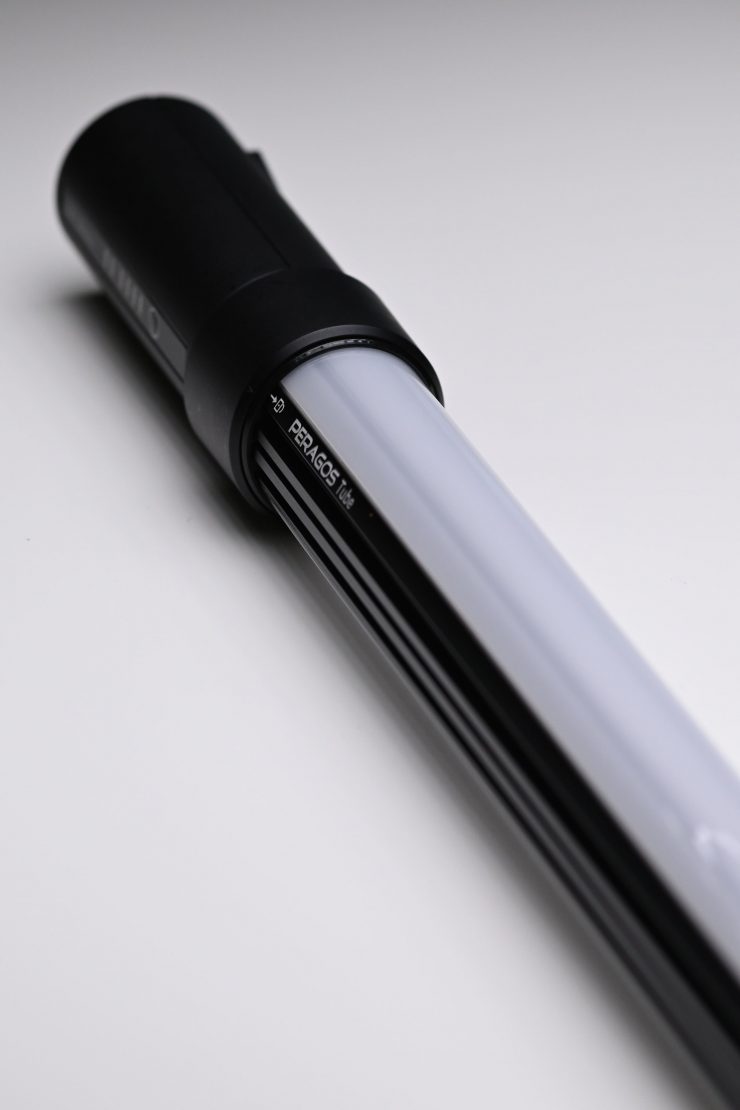
The Vibesta Peragos 120C PIXEL is a fully-featured RGBWW tube light. It has reasonably good color rendition, it is easy to use, and most importantly it can be run off mains or battery power. The ability to individually control so many pixels is a feature we haven’t seen before
The light doesn’t have a ton of output, but as I said earlier, I think it has enough for most of the applications a light like this would be used for. The build quality could be slightly better, but I think most users will probably be ok with it.
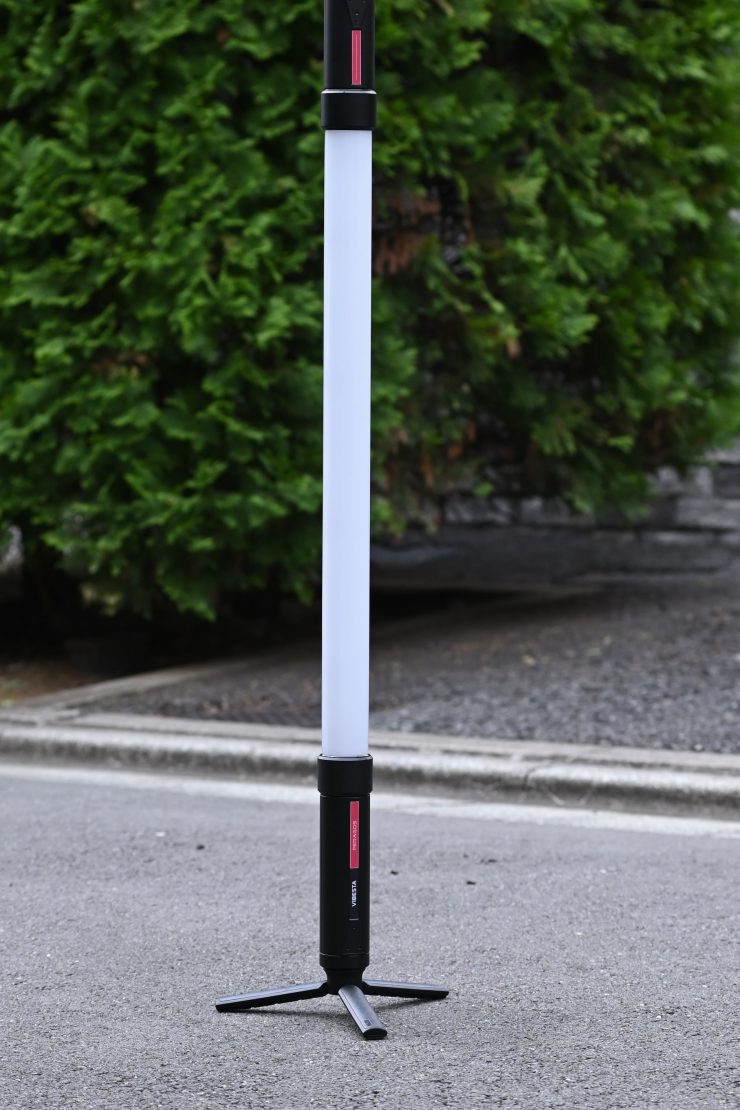
I like that there is a good range of optional mounting accessories available and Vibesta has thought about how the light is likely going to be used by buyers. It is also nice that it can be broken down into components which makes it a lot easier to transport.
There is no such thing as a perfect light, and tube lights, in general, are filled with compromises that you need to be willing to accept. While you could use them for a whole range of different applications, they are clearly more suited to certain lighting requirements than others. The great thing about tube lights is you can combine them and use multiple tubes to create large, powerful; sources. Versatility is one of the key selling points of the 120C Pixel.
At the end of the day, I enjoyed using the Vibesta Peragos 120 Pixel, and despite the few issues I had with the light, it still produced good results. If you are looking for an affordable, fully-featured RGB tube light that can be run off batteries then it is certainly worth looking at.
Like what we do and want to support Newsshooter? Consider becoming a Patreon supporter and help us to continue being the best source of news and reviews for professional tools for the independent filmmaker.

